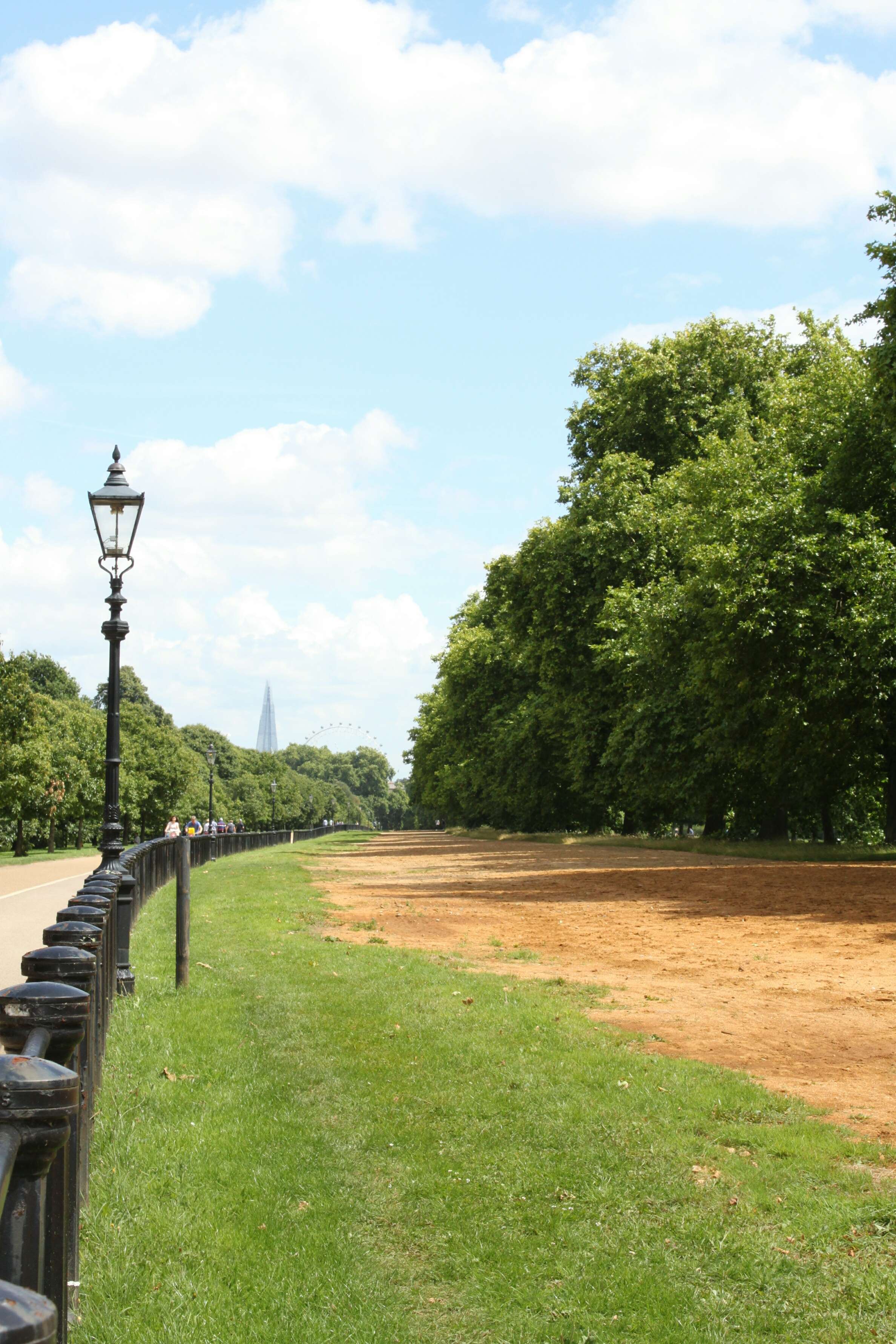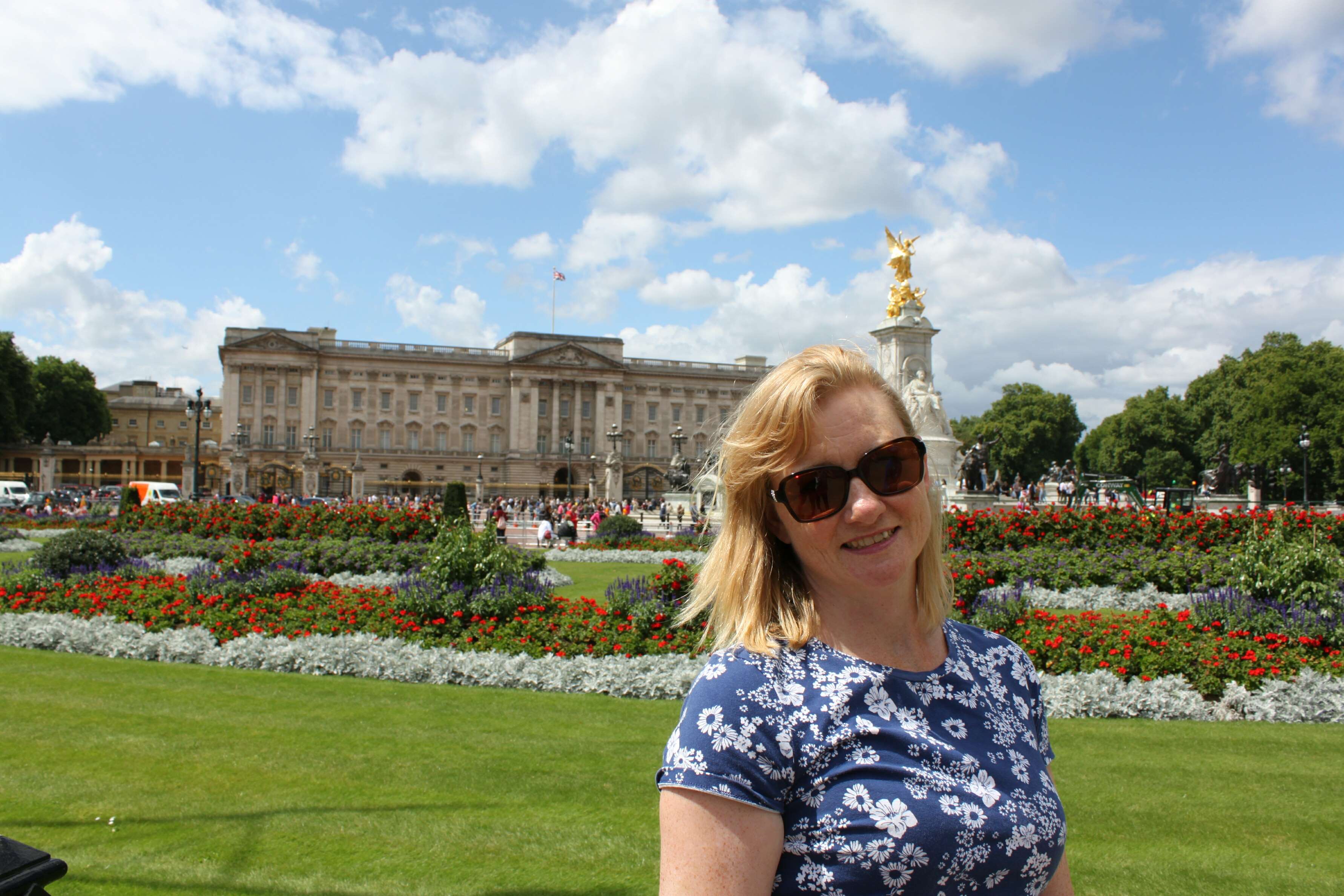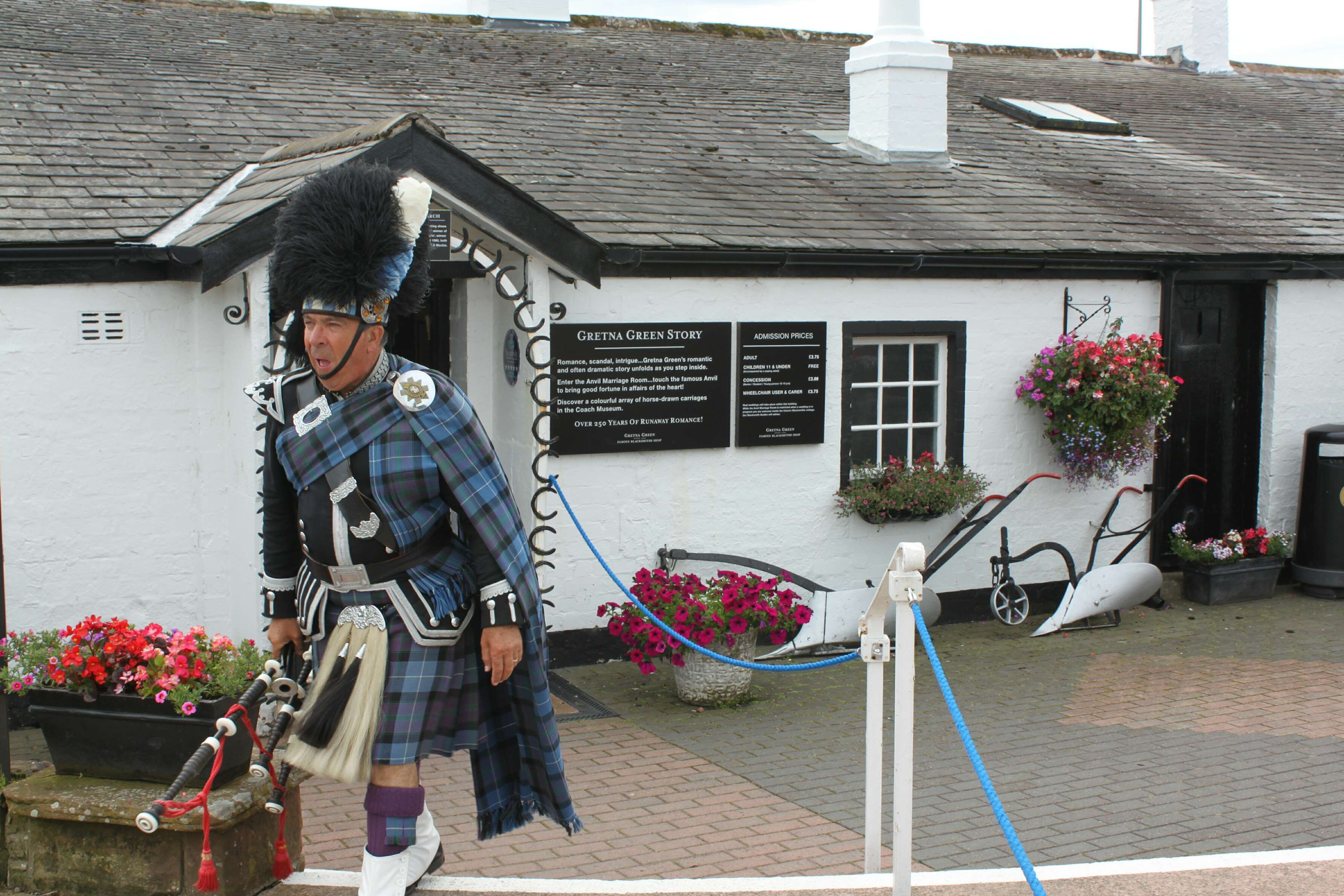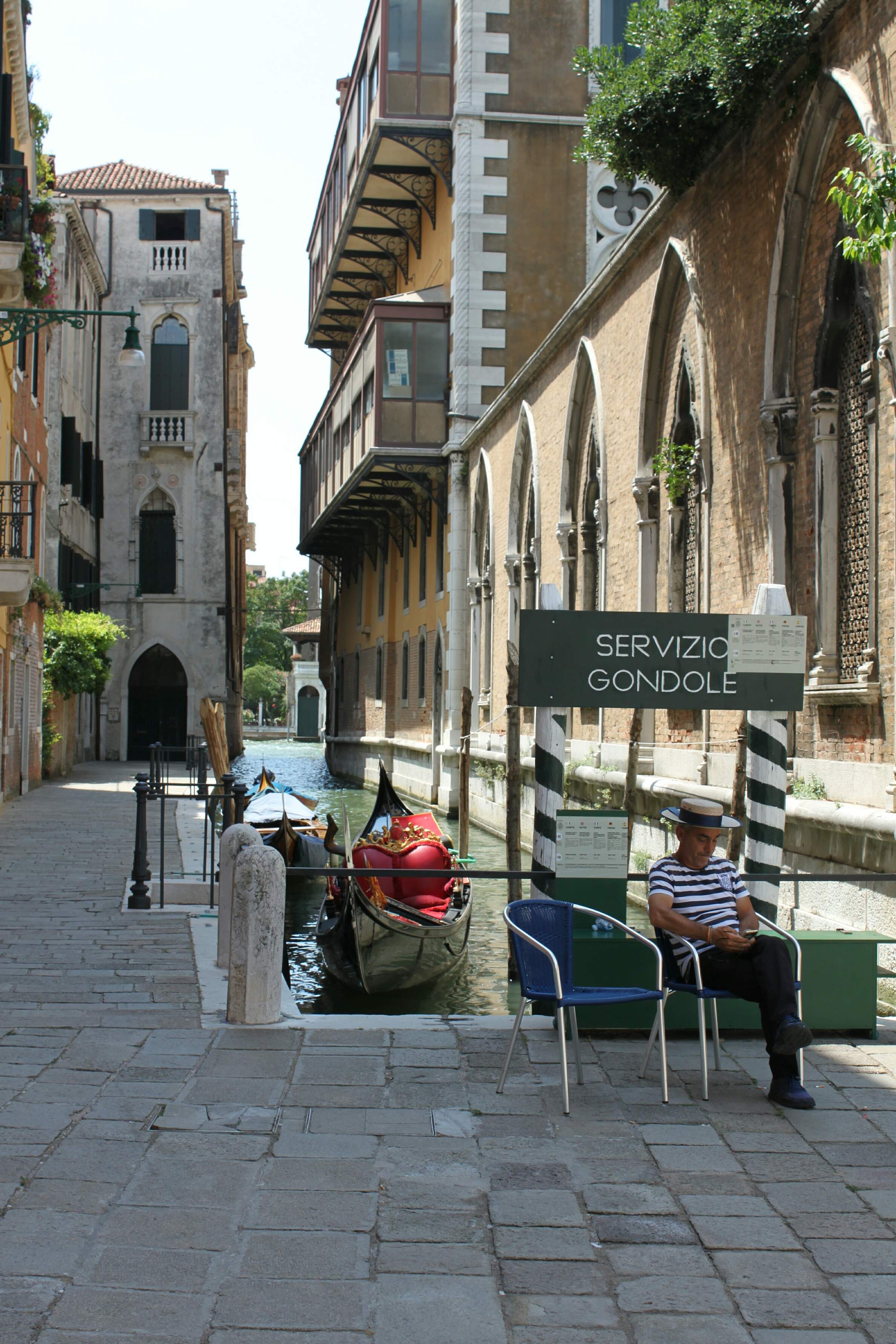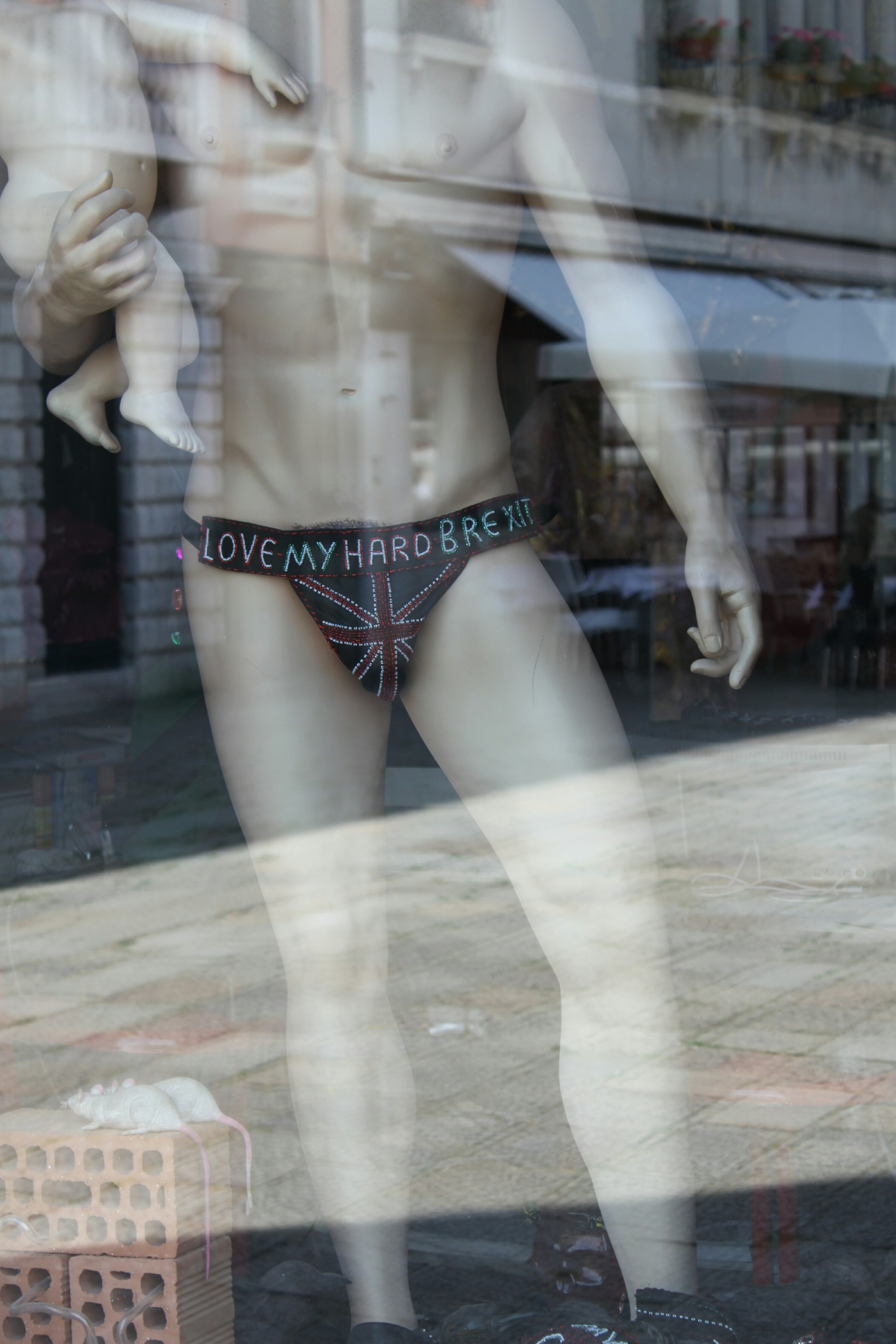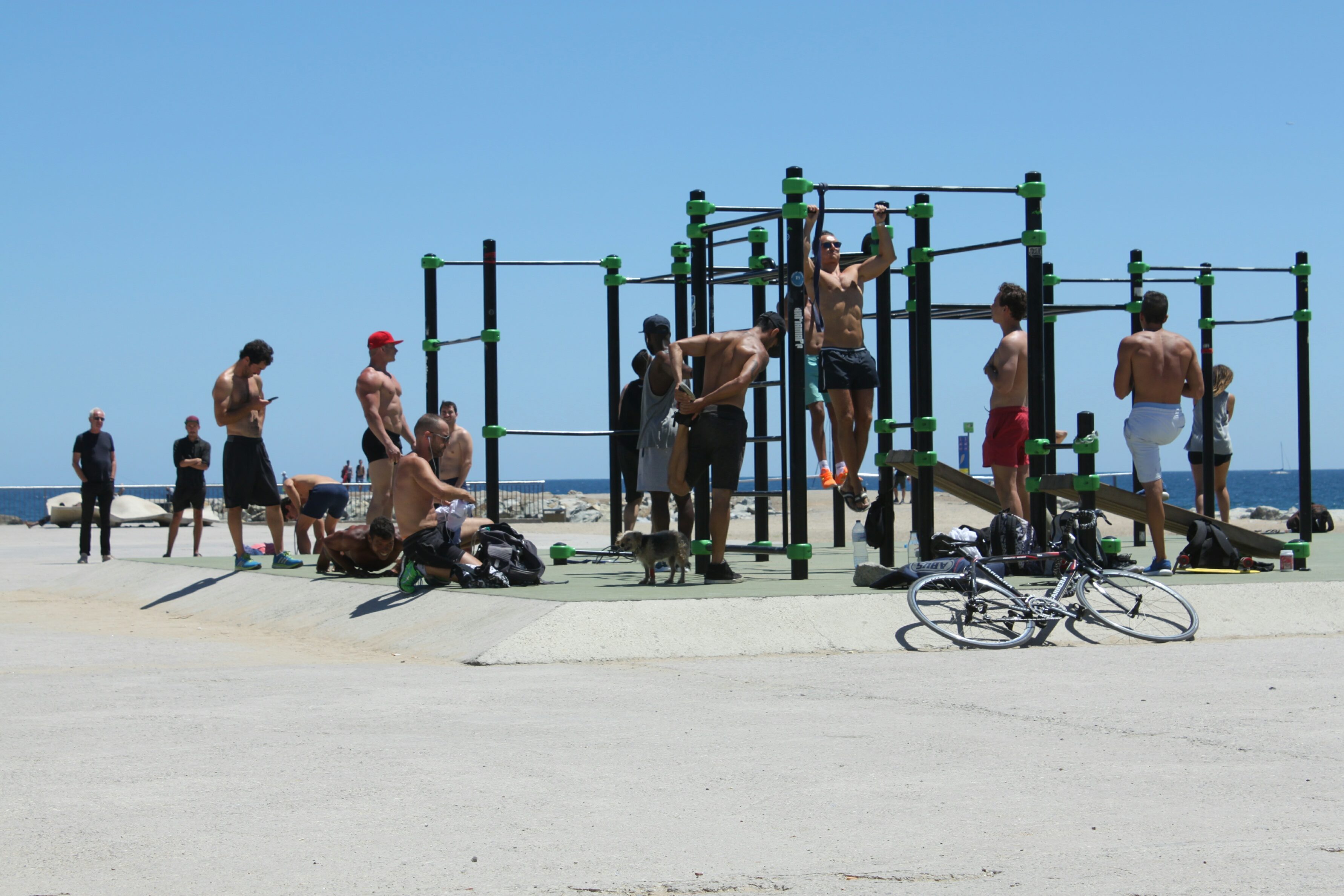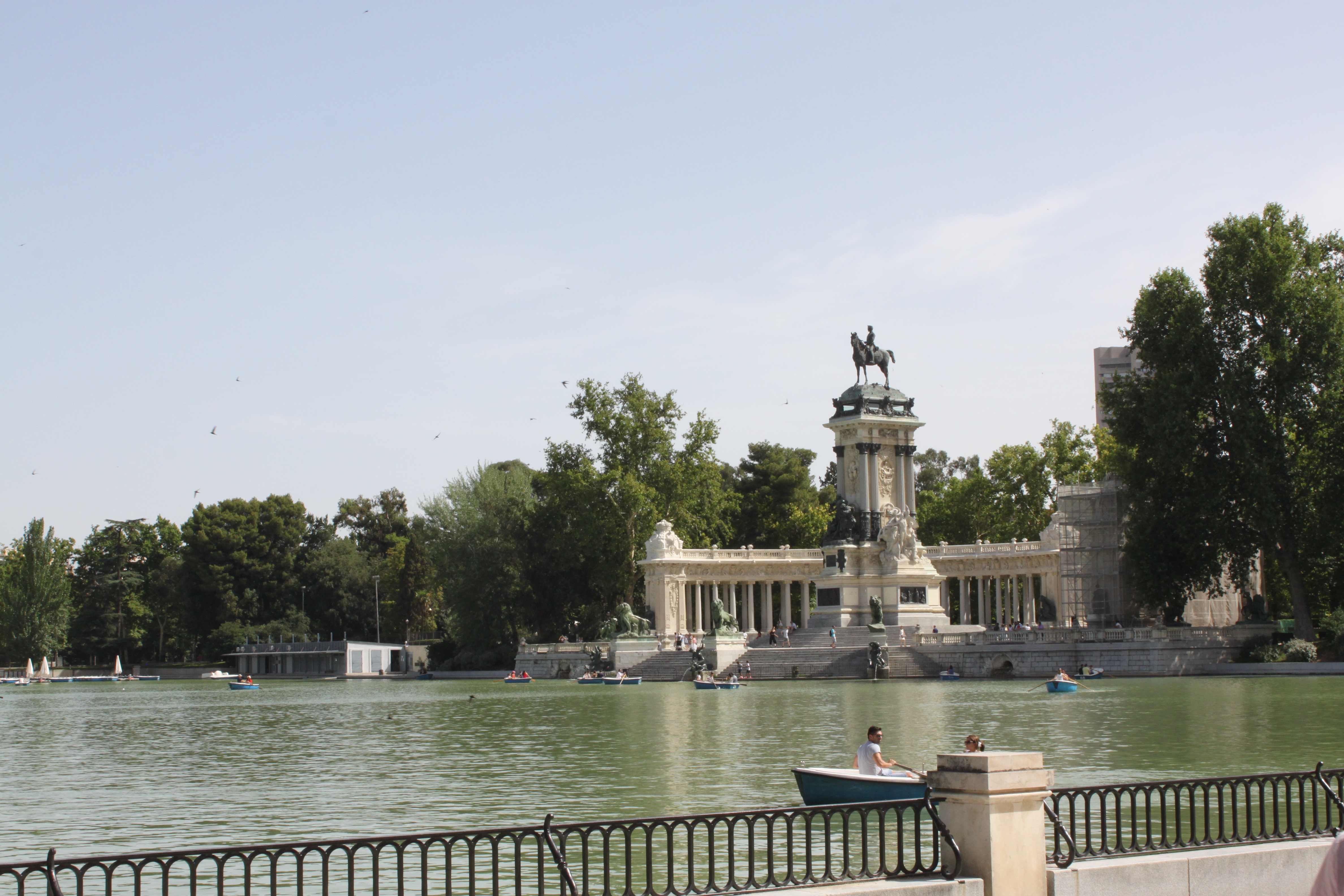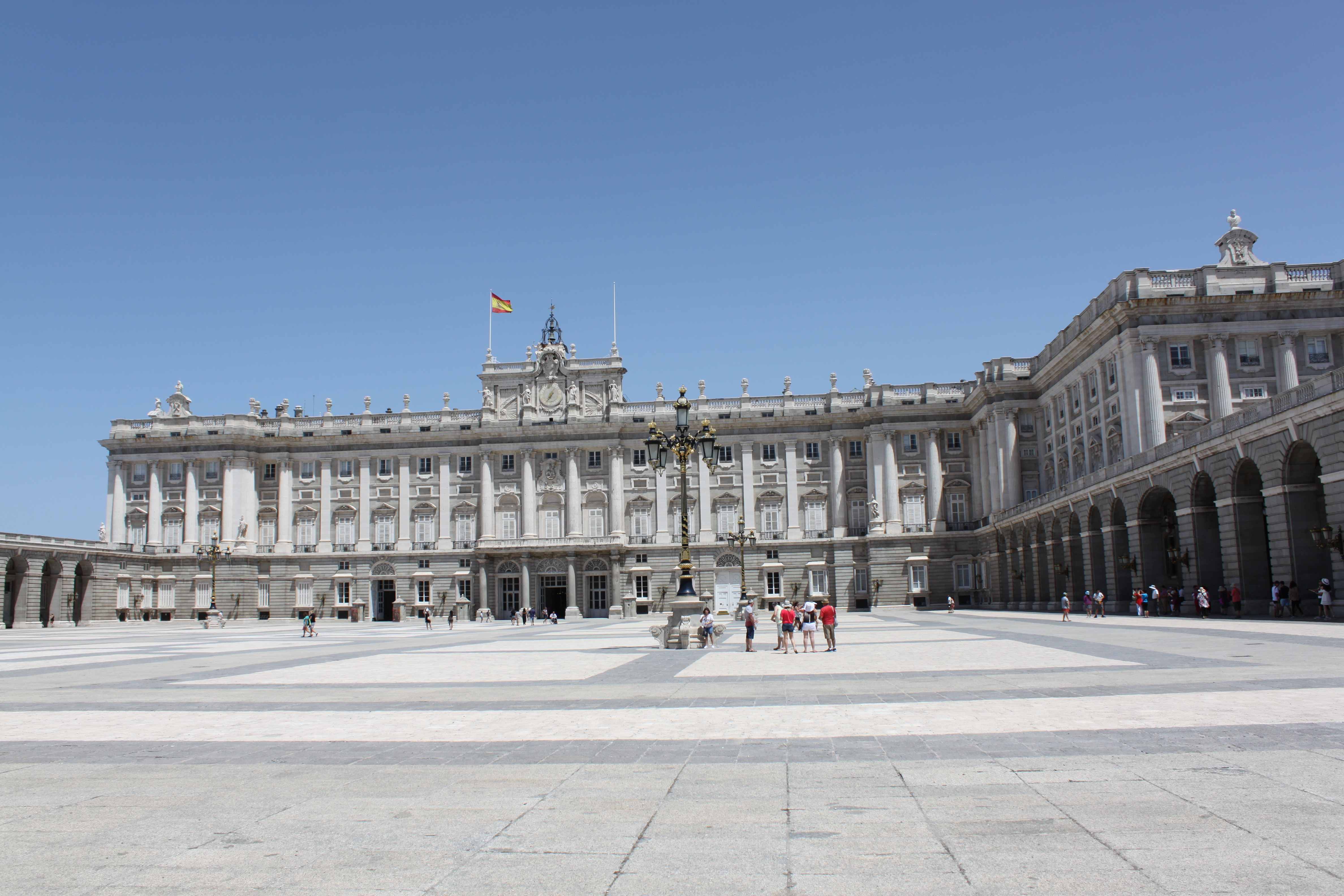Sardinia, Italy
- Details
- Written by Alexia Alexia
- Hits: 5603 5603
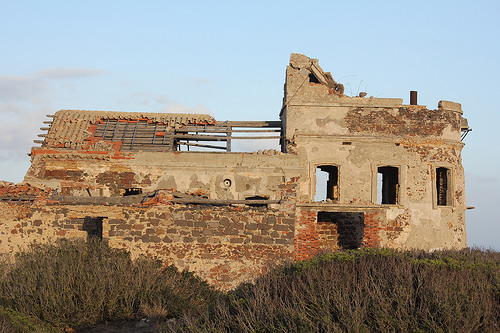 At the beginning of the year, there was a news story that peaked my interest and got me dreaming. It was about a town in Sardinia, Italy called Ollolai that was selling abandoned homes for one euro each on the signed promise that they be restored according to the original architecture (at a cost of approximately €25,000) within a three-year timeframe. The town was also offering language and basket weaving lessons (the local craftwork) to help newcomers integrate into the local culture. This is my dream.
At the beginning of the year, there was a news story that peaked my interest and got me dreaming. It was about a town in Sardinia, Italy called Ollolai that was selling abandoned homes for one euro each on the signed promise that they be restored according to the original architecture (at a cost of approximately €25,000) within a three-year timeframe. The town was also offering language and basket weaving lessons (the local craftwork) to help newcomers integrate into the local culture. This is my dream.
Or my nightmare. When I lived in England, my husband and I would watch a TV show (I think it was Grand Designs Abroad) where a couple, occasionally a family, would buy a nearly destroyed historical property in Europe and then fix it up. There was always the inevitable language difficulties, budget-blowing disasters, and local red tape to overcome, but at the end the property owners had an amazing home that they wouldn’t have been able to find in the UK. I would watch avidly, taking mental notes, while my husband hid my passport and added another layer of security to our joint bank account.
After reading the article about the homes for sale in Sardinia, I spent two weeks researching the area. It’s located near a National Park in the center of Sardinia, a hilly (some would say mountainous) area of natural beauty. From the photos, it looked like they occasionally experienced a dusting of snow in the winter and the vegetation was supported by adequate although not excessive rainfall. There were plenty of hikes and mountain biking seemed to be a popular local sport (after all, you can only basket weave for so many hours of the day). The town was a decent size with plenty of cafés and bakeries and other necessary shops.
Unfortunately, for me, the timing is wrong. With four children still in school and a husband who is a partner in a business, packing up and moving my brood halfway across the world to go through the insanity of renovating a ruin in a foreign country just isn’t feasible. Plus, I know my husband. Although he’s happy here in Canada, he grew up in London and living on a small island, even in the Mediterranean would drive him insane. So, I await another opportunity. But if, ten years from now, you turn on your telly and see me trying to communicate with a local builder or architect with a pile of stones behind me and a set of dream plans in my hand, don’t be too surprised.
Until next time…happy reading!
Gander, Newfoundland
- Details
- Written by Alexia Alexia
- Hits: 5091 5091
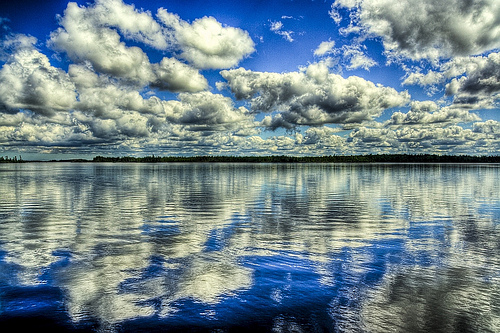 And…I’m back again. I took a wee sabbatical from blogging while I got some of my ducks in a row (the rest are still waddling unrestrained through my mind). I have two projects out on submission and I’ve re-released two books (Her Faux Fiancé and Singapore Fling). See my Books page for info. It’s time now to get back to writing new words and the resultant settings research.
And…I’m back again. I took a wee sabbatical from blogging while I got some of my ducks in a row (the rest are still waddling unrestrained through my mind). I have two projects out on submission and I’ve re-released two books (Her Faux Fiancé and Singapore Fling). See my Books page for info. It’s time now to get back to writing new words and the resultant settings research.
The book I’m working on at the moment has the hero and heroine about to crash land in a private jet at the airport in Gander, Newfoundland. Perhaps not the most romantic destination, especially in winter, but I believe many Canadians have a soft-spot in their hearts for Gander even though they may not have visited there personally. For my couple, it will provide a turning point in their relationship and I’m looking forward to discovering some of the amenities offered in this little town which will allow them to get to know each other better.
Gander started as an airport and became an important military base during the Second World War with as many as 10,000 British and American army personnel based there. After the war, a town was developed a little farther from the airport runways and it became an important refueling stop for transatlantic flights. Most aircraft now no longer need to make pitstops along the way, but it remains on the minds of pilots who may need to make an emergency landing for medical or other reasons.
The town has been immortalized in literature and a musical for the role it played in hosting passengers from around the globe following the September 11 attacks. Thirty-eight civilian and four military planes set down in Gander, swelling the population of the town by 6,600 people. Come From Away is a musical about some of the passengers who spent up to six days in Newfoundland after all aircraft were grounded. It’s currently enjoying a run on Broadway in New York.
My couple, however, will have a true small-town Canadian experience: snowmobiling, curling, and a Newfoundland tradition—kissing the cod. I can’t wait to dive into this part of the story.
Until next time…
photo credit: Zach Bonnell Dead Mans HDR via photopin (license)
Sicily
- Details
- Written by Alexia Alexia
- Hits: 5032 5032
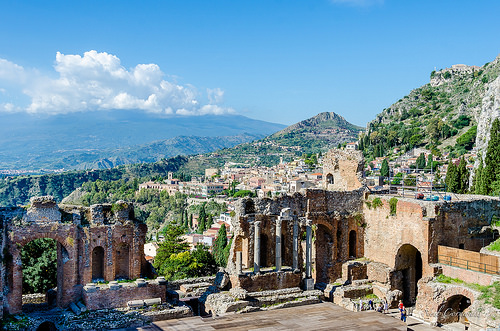 And we’re back to my usual format, talking about settings I’ve researched or sights I would like to visit. I’m already envisaging my next trip and the places I’d go. Seriously, I wish someone would pay me to travel. Until then I shall have to content myself with vicarious voyages and blog posts. Also, a note for my regular followers that I’ve changed my blog dates to the 1st and 3rd Tuesdays of the month (or thereabouts depending on life’s whims). The 1st and 15th were getting too difficult as they often fell on days when I was completely swamped with mom duties.
And we’re back to my usual format, talking about settings I’ve researched or sights I would like to visit. I’m already envisaging my next trip and the places I’d go. Seriously, I wish someone would pay me to travel. Until then I shall have to content myself with vicarious voyages and blog posts. Also, a note for my regular followers that I’ve changed my blog dates to the 1st and 3rd Tuesdays of the month (or thereabouts depending on life’s whims). The 1st and 15th were getting too difficult as they often fell on days when I was completely swamped with mom duties.
Enough housekeeping… Today, we head to Sicily. I did a lot of research on this Mediterranean island for my recent release, Under the Sicilian Sky. I watched videos, scoured guide books and websites, spent hours wandering around towns and villages on Google maps. I read blogs and scrolled through reviews and holiday photos posted online… I did everything but go there. But man, I wish I could.
Just the name Sicily conjures images in the mind—Mount Etna spewing lava, tiny villages perched on cliff faces, and ancient ruins from almost every civilization to claim this island at one point or another in its history. To be honest, I’m not sure where I’d start in this diverse place. I love how one website puts it: “Come visit our sunny island. We’ve been expecting you for three thousand years!” (http://www.bestofsicily.com/)
Of course I’d have to visit Agrigento and Sciacca, both mentioned in my book. Agrigento is known for the Valley of the Temples, a large archeological site just outside the town, surrounded by olive groves and almond orchards. One of Sicily’s two completely standing Greek temples is located here. Sciacca has the beaches and thermal pools to relax in after a hectic day’s sightseeing. On the way up to Palermo, a stop at Erice sounds like a good idea. This town set on a hilltop has seen successive empires pass along its medieval streets and I hear it’s known for its pastries.
Cefalù, an hour out of Palermo heading east over the “top” of Sicily is an example of Sicily’s multicultural influences. Taormina appears to be Sicily’s touristic hub with most cruises I’ve seen stopping here. With Mount Etna in the backdrop, restaurants, shops, beaches, and castles to explore, it seems to have everything, including crowds during high season. Still, I think I could manage a night in a restored medieval monastery and dinner in a Baroque palazzo no matter how many people were around me.
My trip would probably end in Siracusa, the “intellectual’s" Taormina (although I’m not sure I qualify), once one of the most important cities in the ancient Greek world. But then I haven’t lingered in wine country or stopped in Segesta to see one of the best-preserved ancient Doric temples. I guess there’s no help for it. I will have to write another book set in Sicily and work some of these wonders into my story.
Until next time…happy reading!
photo credit: Neil Cornwall Teatro Antico di Taormina via photopin (license)
London - Take 3?
- Details
- Written by Alexia Alexia
- Hits: 5149 5149
Yes, I'm still going on about my European adventure last year. But this is the last post then I'll be back to places I've researched and/or written about for my romance novels. And I apologize for the delay in getting this post up, my laptop suffered a catastrophic failure and I just got it back up and running today. On to London...
It’s fitting that we ended our adventure in the UK’s capital. Returning to London was like going home. A home that had some new bits, and a lick of paint here and there, but familiar... Like you know where everything is, or should be, and you don’t have to mentally translate the street signs. I lived in London for almost ten years, married a Londoner, and had two babies there. Still, I’m always excited when I venture into this ageless city and imagine people walking the same streets, visiting the same shops, hundreds of years ago.
As we left the UK when my oldest two children were very young, and the fourth child had never even been to London, we did a few of the regular tourist things. We took photos of Tower Bridge, the new Shard (where, by the way, much of my book Masquerading with the Billionaire takes place, just sayin’), and the Gherkin which I think is an awesome name for a building (it’s the British word for pickle). I finally managed to walk across Millennium Bridge as I hadn’t during previous visits, and see the Globe Theatre in Southbank.
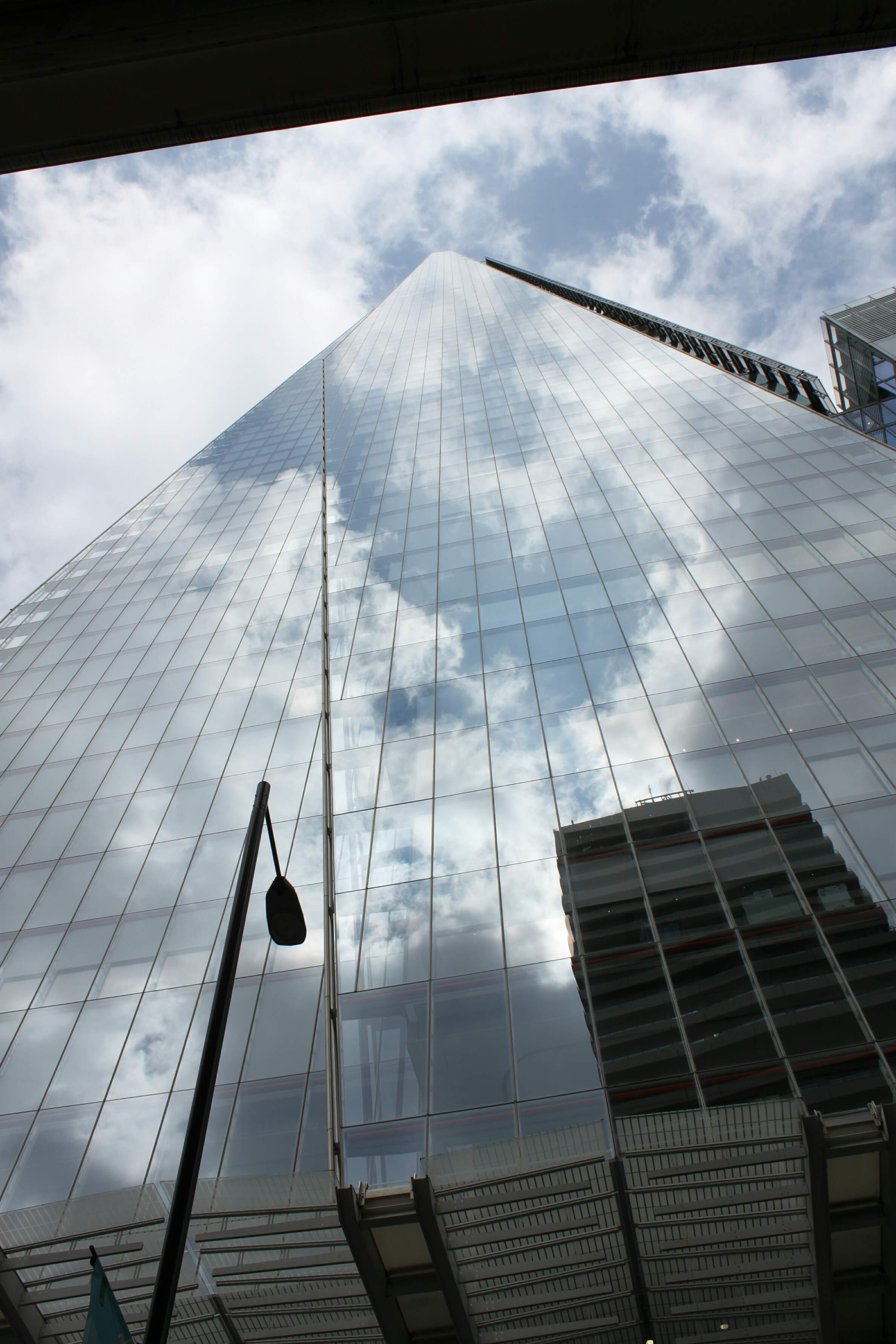
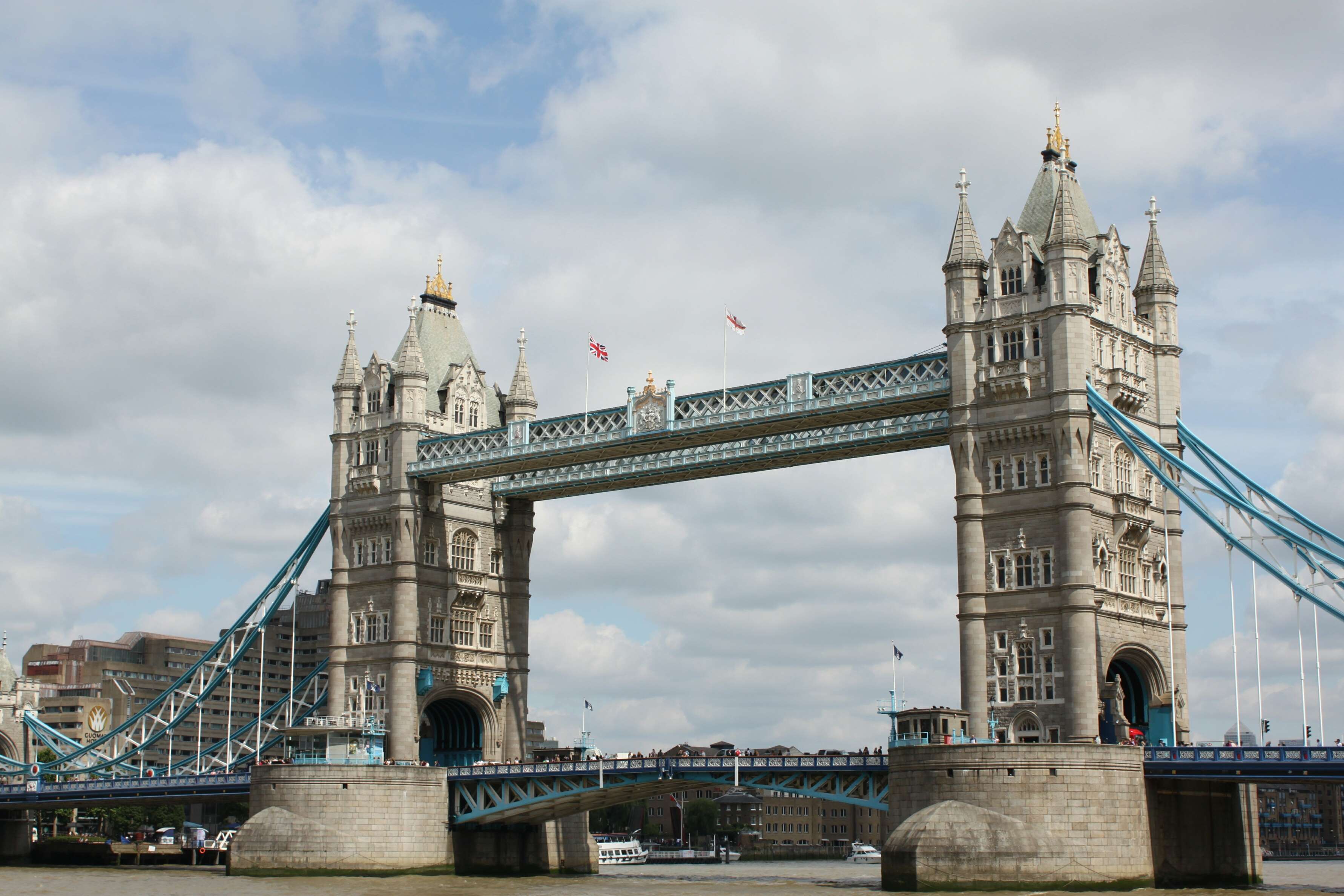
Buckingham and St. James’s Palaces were familiar haunts to me as I used to work around the corner from them. I strolled Hyde Park and imagined the Serpentine full of carriages and young men on horseback racing down Rotten Row. Covent Garden and its market were as they’d always been: chaotic and full of color. Unfortunately, my husband was ill for most of our stay in London so we didn’t do much in the evening except visit with friends and family. But if you go, I strongly suggest you hang around in Leicester Square for an hour or two and just people watch.
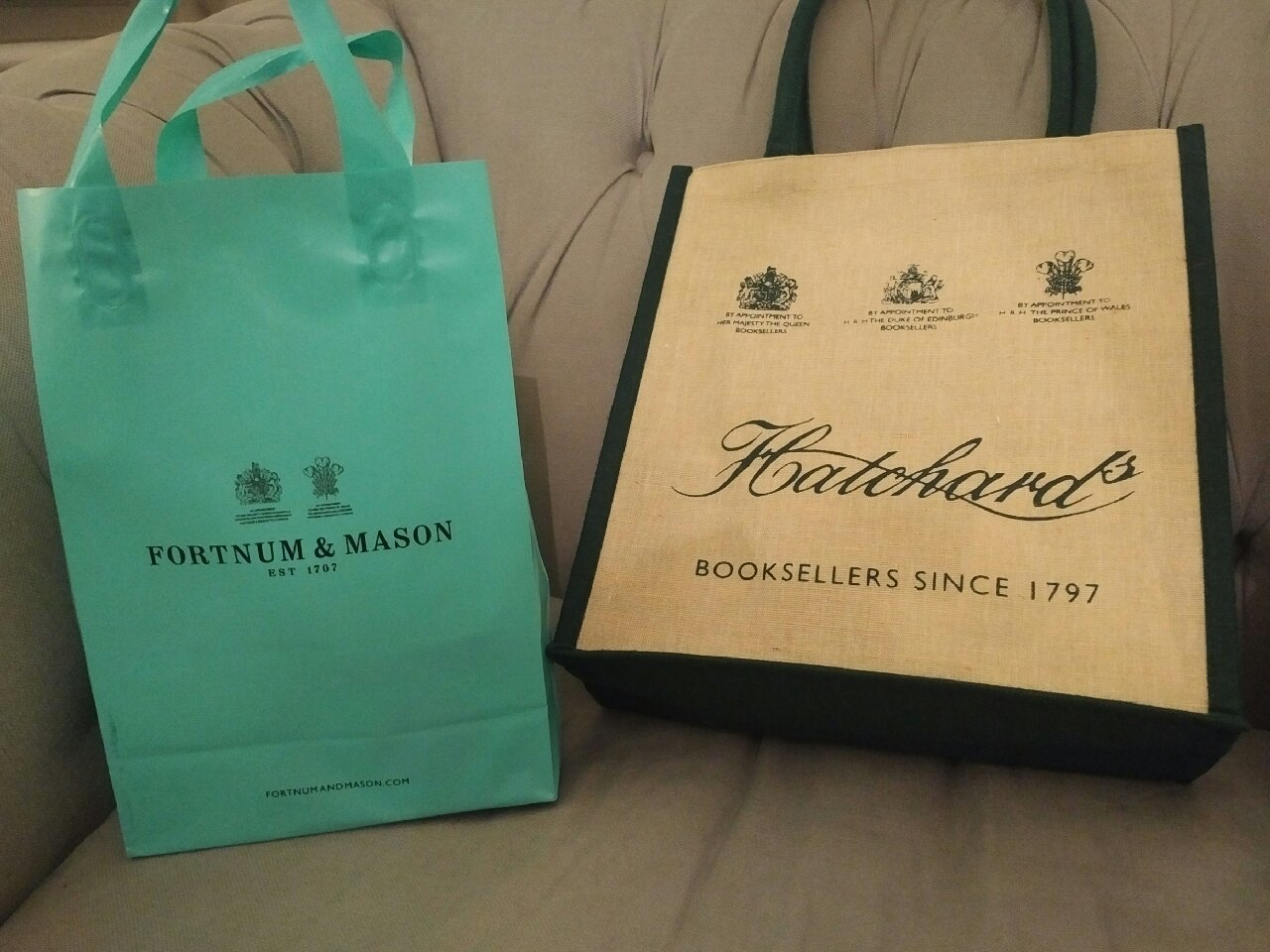 For me, no visit to London would be complete without a stop at Fortnum & Mason and Hatchards. Both shops have been around for hundreds of years and never lost their allure. I managed to restrict myself to buying only one tin of tea in Fortnums, laughing inwardly at the clerk’s mild disapproval when I purchased bagged and not loose-leaf tea.
For me, no visit to London would be complete without a stop at Fortnum & Mason and Hatchards. Both shops have been around for hundreds of years and never lost their allure. I managed to restrict myself to buying only one tin of tea in Fortnums, laughing inwardly at the clerk’s mild disapproval when I purchased bagged and not loose-leaf tea.
We also made a quick trip up north to Yorkshire with some friends and even managed a visit across the Scottish border to Gretna Green. I couldn’t convince my husband to remarry me over the blacksmith’s anvil but the whisky tasting was great.
Alas, it was soon time to return to Canada and start paying off some of the bills. But the memories we made as a family will last a lifetime. Until next time, cheerio!
Paris, France - Part Deux
- Details
- Written by Alexia Alexia
- Hits: 5247 5247
Doesn’t matter how many times I’ve visited, or how long I’ve stayed, I still get a thrill from visiting Paris. When booking our grand adventure, I included the French capital only because my daughters wanted to see the Eiffel Tower. I figured I’d been there, done that. But the minute I emerged from the metro I was so excited it was like I’d never set foot in the city before.
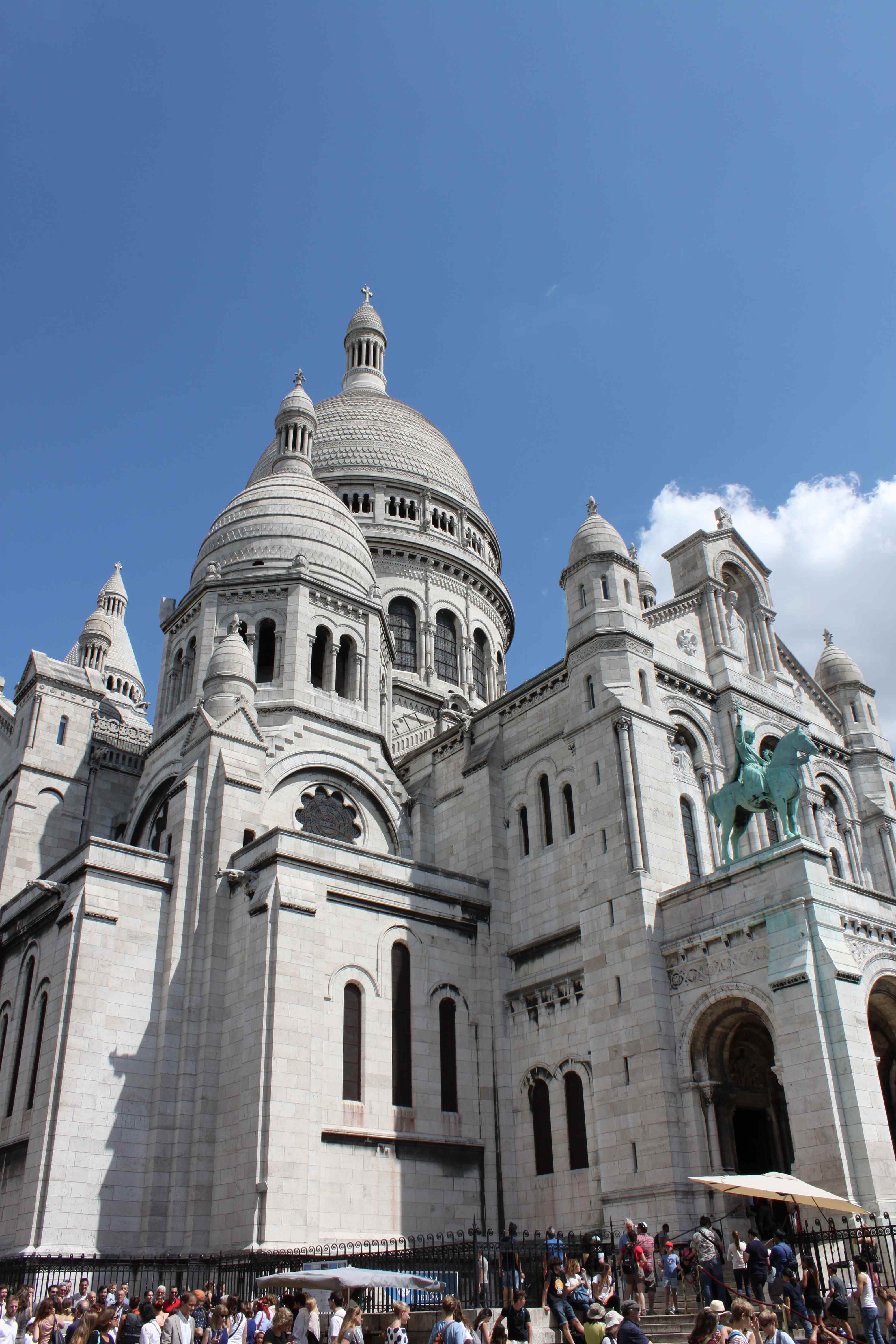
 One of my favorite things to do in Paris is to browse the little stalls along the Seine and peruse all the books and knickknacks. Then there’s Montmartre. Another hour or three can be whiled away in this classic neighborhood on the hill, observing theincredible artists do their thing. And, of course, sip an espresso (or other beverage of your choosing) in the square and people watch. Add in a stroll up (or down) the Champs Élysée and your Fitbit, like mine, will think it’s been kidnapped. Or, if you’re not feeling great, as was the case with my husband, just lean out the window of your accommodation and watch Parisian’s park their cars: instant, free entertainment.
One of my favorite things to do in Paris is to browse the little stalls along the Seine and peruse all the books and knickknacks. Then there’s Montmartre. Another hour or three can be whiled away in this classic neighborhood on the hill, observing theincredible artists do their thing. And, of course, sip an espresso (or other beverage of your choosing) in the square and people watch. Add in a stroll up (or down) the Champs Élysée and your Fitbit, like mine, will think it’s been kidnapped. Or, if you’re not feeling great, as was the case with my husband, just lean out the window of your accommodation and watch Parisian’s park their cars: instant, free entertainment.
The most iconic symbol of Paris, the Eiffel Tower, is best viewed from the Palais de Chaillot where you have sweeping views of the Jardins du Trocadero, the tower, and the Champ de Mars beyond. But you still have to venture beneath the structure and take a million photos, it’s a Paris visit requirement. While walking in the Champ de Mars behind the tower with my four children, a street hawker (of which there are millions in Paris) approached and asked if I wanted to buy a bottle of champagne. Did I look like I was indulging in a romantic moment? Or maybe he just figured with four kids I needed a drink. 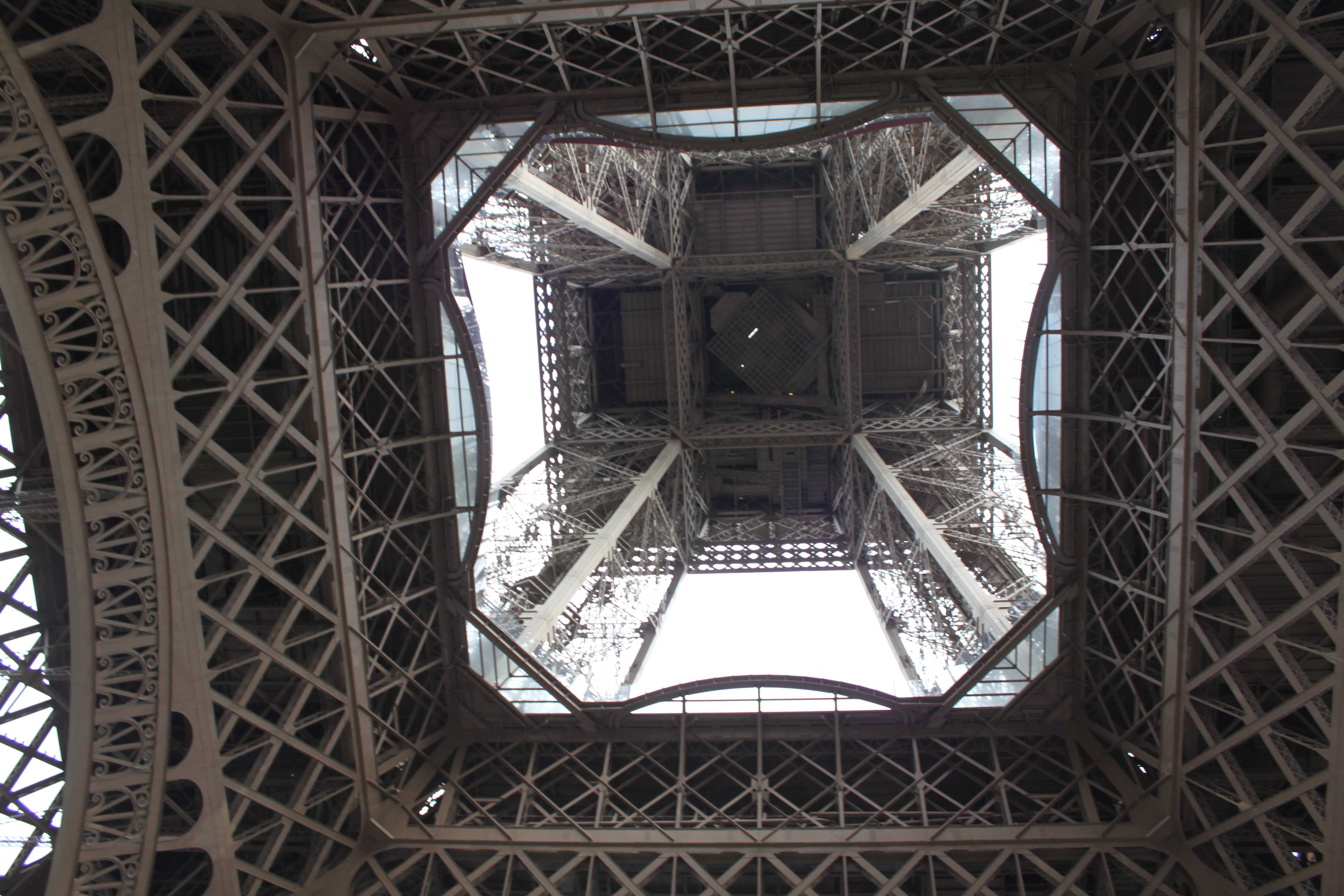
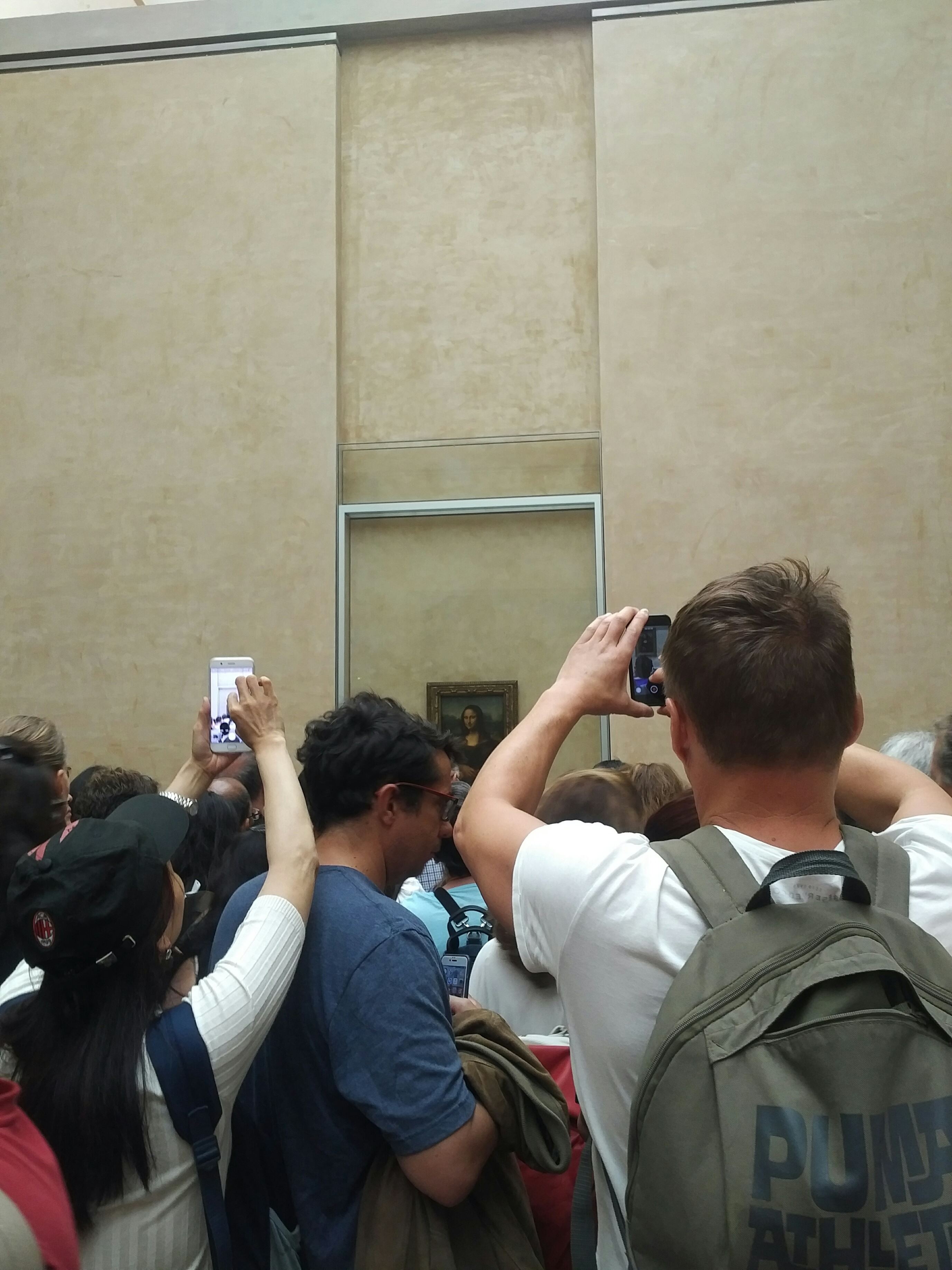
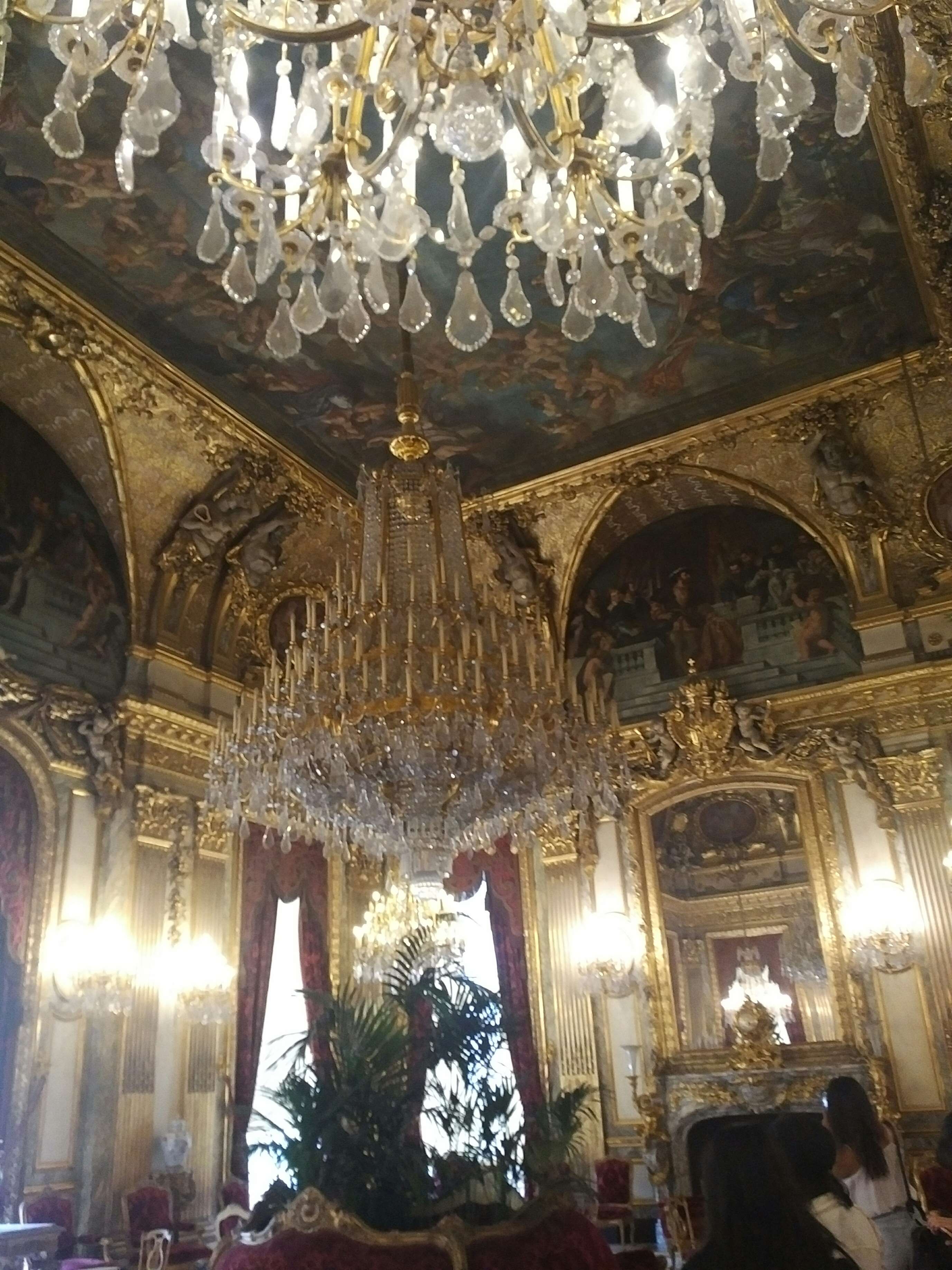 A rainy morning was the perfect opportunity to visit the Louvre, which I am pleased to say is free for children under eighteen so I only needed to pay for myself. Don’t expect to get close to the Mona Lisa, or La Joconde as the French call it. But the Napoleon III apartments are definitely worth a visit.
A rainy morning was the perfect opportunity to visit the Louvre, which I am pleased to say is free for children under eighteen so I only needed to pay for myself. Don’t expect to get close to the Mona Lisa, or La Joconde as the French call it. But the Napoleon III apartments are definitely worth a visit.
No trip to Paris is complete without visiting a boulangerie (bakery). Sorry I didn’t get a photo, too busy drooling over the pastries. Next time I’m back in a city I called home for almost ten years. And facing up to the end of my European Adventure. À bientôt!
Tours, France
- Details
- Written by Alexia Alexia
- Hits: 4672 4672
If anyone finds my December, please let me know. It seems to have gone completely missing. Sorry about that, was caught up in edits then getting ready for a blog tour for my new release. Please welcome Under the Sicilian Sky to my list of publications.
We'll continue the blog from where we left off in Venice. Our adventure continued through the southern Alps and across the French border. That’s also when the wheels fell off our mode of transport. Trains in Spain and Italy had run with clockwork efficiency and comfort. As soon as we crossed into France that all changed. I won’t bore you with all the details but suffice to say we were very glad when we eventually arrived in Tours, especially as it meant we wouldn’t have to take another train for a week.
If you picture a map of France, Tours is almost in the middle of the country, and one of my favorite places in France. My husband and I had visited here eighteen years ago (pre-children) and had such a great time we’d always wanted to go back. Tours has changed a lot in nearly two decade; it is no longer the quiet French town but a bustling, modern city. But it still holds onto its uniqueness with modern and ancient blending together.
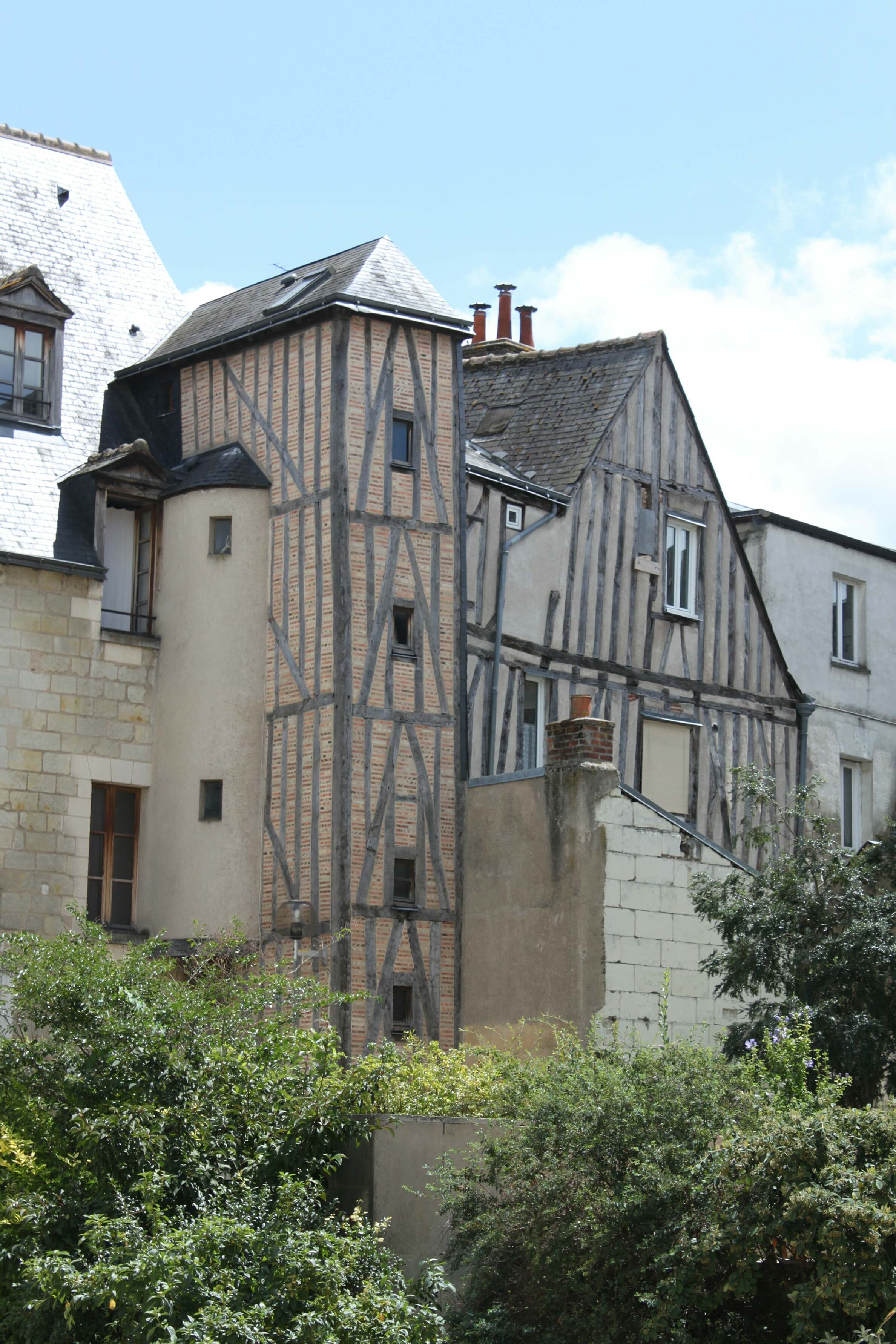
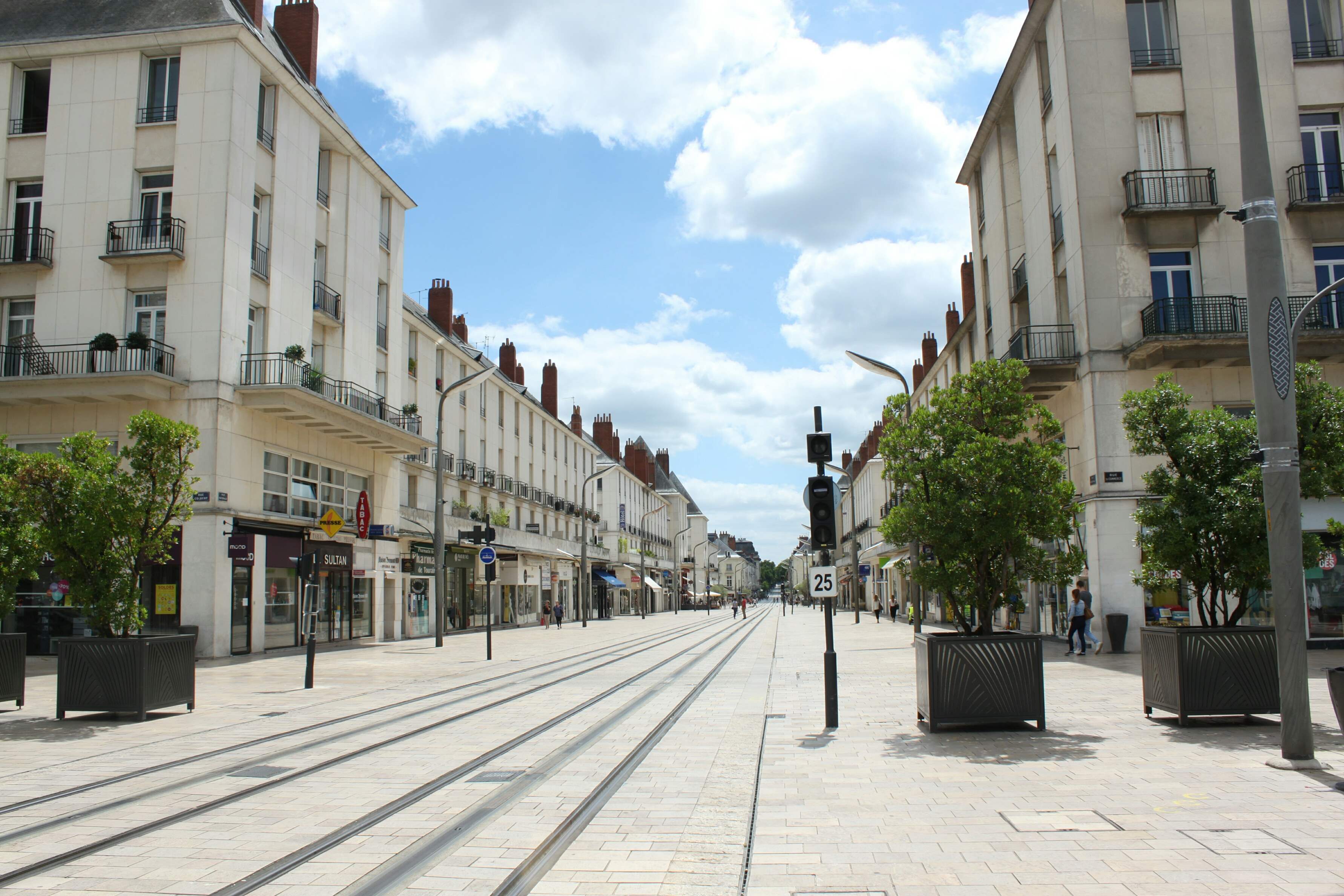
It was also Bastille day weekend, which probably accounted for why the trains weren’t running properly. So we saw an amazing fireworks display and there was also an incredible light show on the face of the cathedral. If you check out my Facebook author page you can see a very brief video to give you a flavor. But the main reason for coming to Tours is that it’s the gateway to the Loire Valley’s chateaux. We did two day-tours and the bonus of being a big family, for most of it we were the only ones in our van.
Here’s just a selection of the ones we saw:
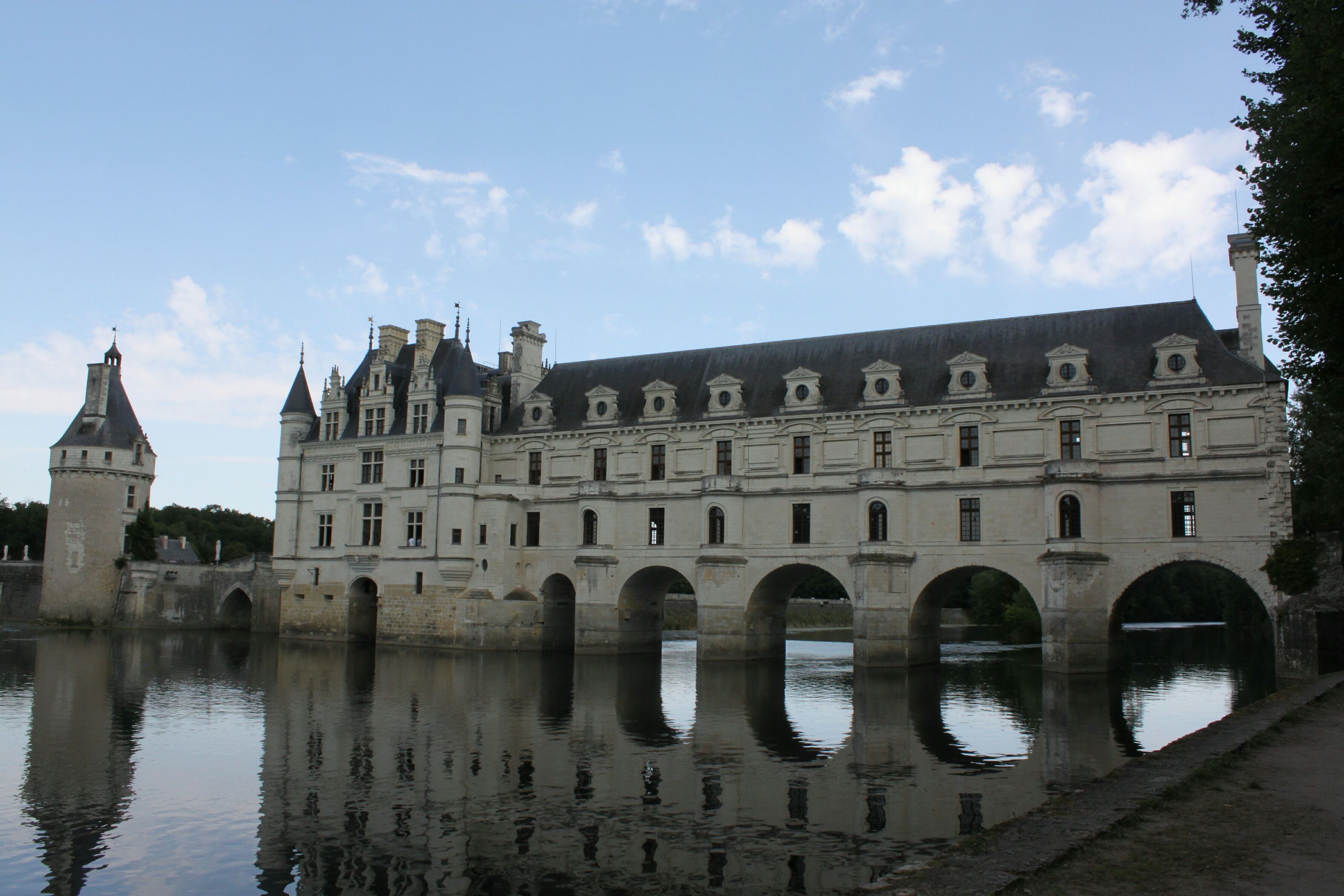
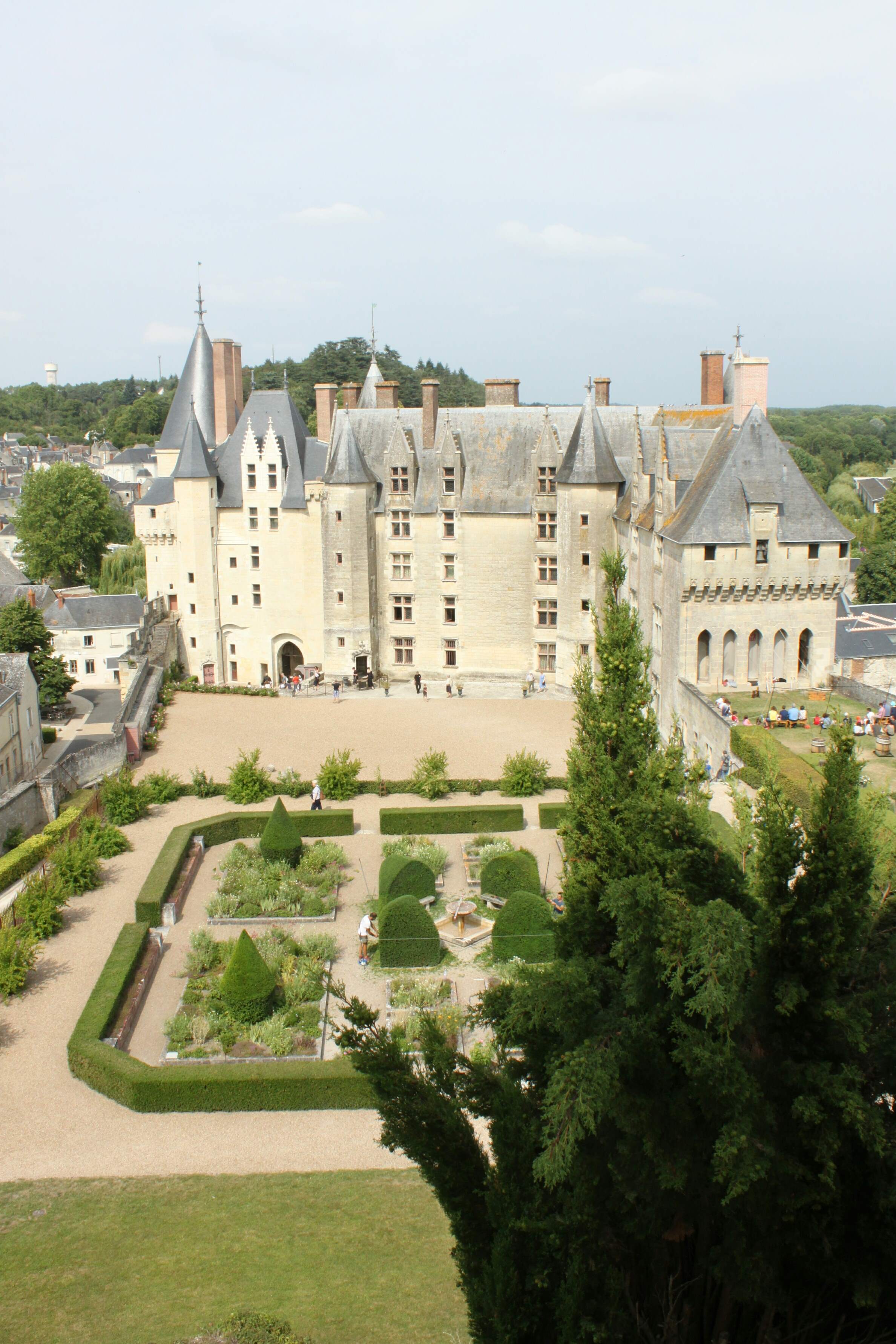
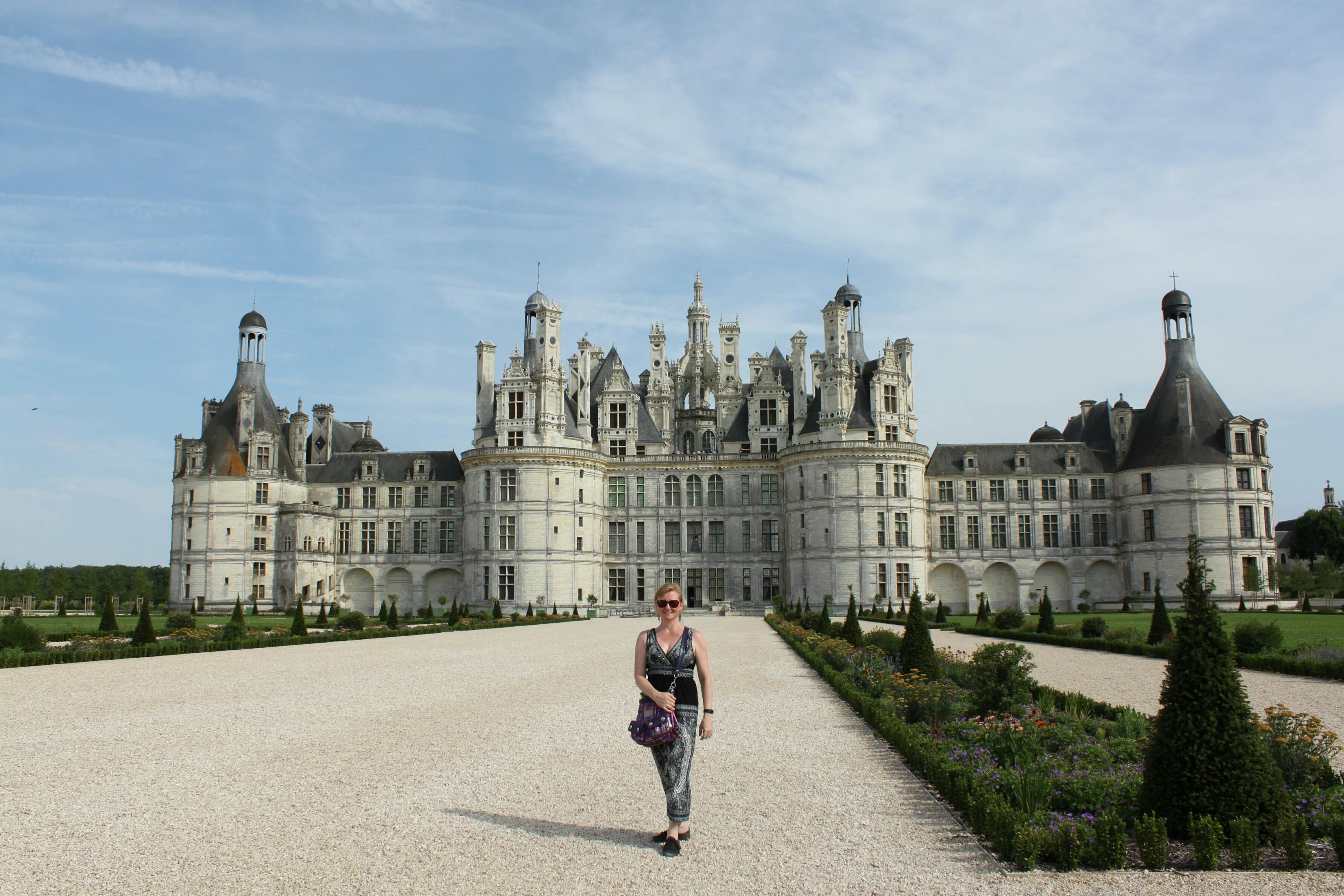
It staggers the mind to think of how much money went into building and maintaining these places. Kind of also helps you understand the reasons behind the French revolution. As a romance writer, however, my imaginations went to secret trysts and assignations in the corridors and gardens. Even today, it’s a great place to meet a knight in shining armor.
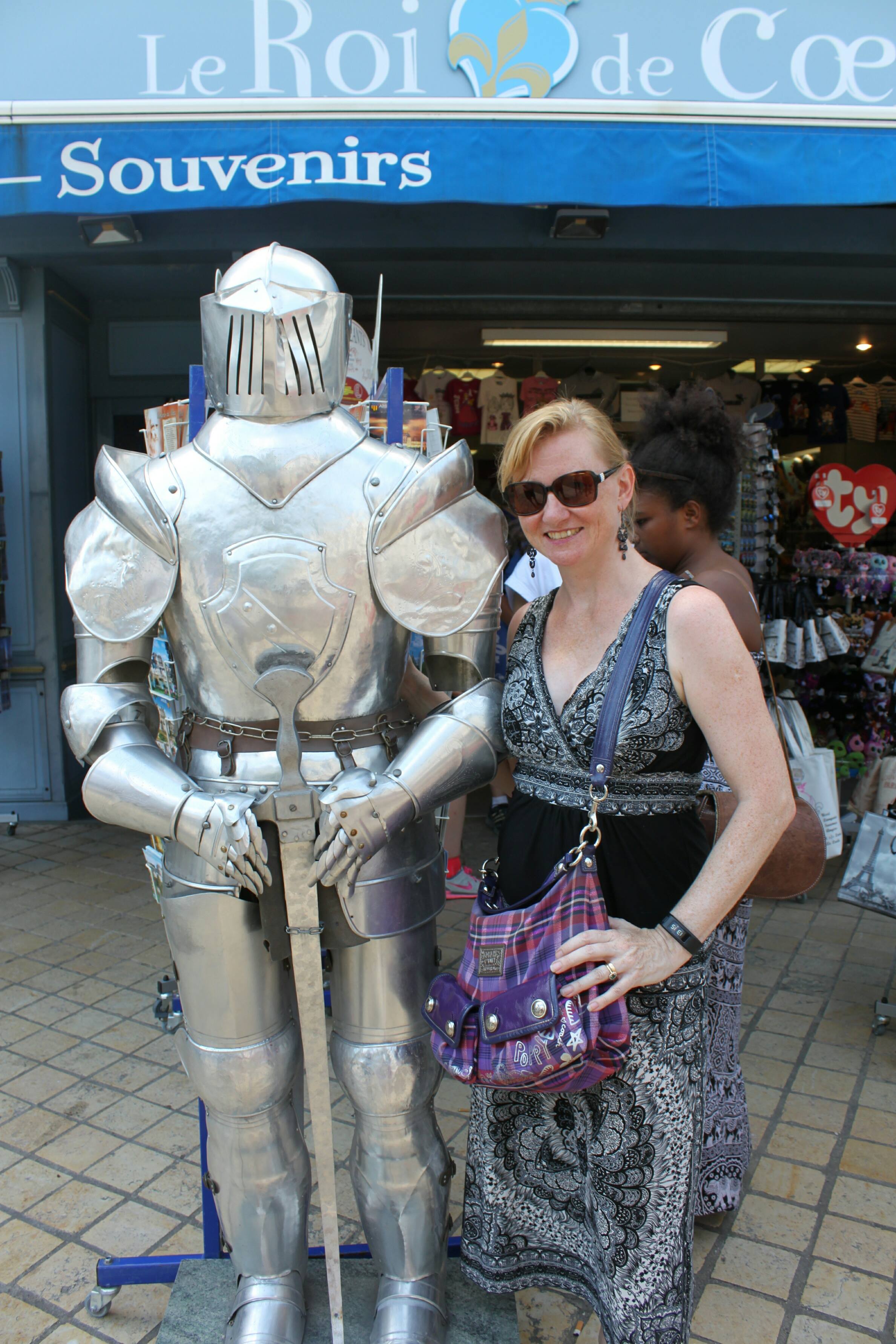
Too soon it was time to brave the French trains again and head off to the capital. Until next time...
Siena and Venice, Italy
- Details
- Written by Alexia Alexia
- Hits: 3954 3954
When I was traveling this summer and anticipating blog posts I thought our two days in Siena wouldn't net me enough material so I had planned to only blog about Venice. However, I was wrong. I could have stayed in Siena for a week and been able to blog about something different every day. This medieval town, about an hour out of Florence, had been on my radar since I named my one of my daughters Sienna.
Siena is divided into seventeen contrade or districts and you can tell which area you're in because the street lamps change. Only July 2 they have an annual horse race between ten of the seventeen districts. If you saw the track, which is around the main square, you'd understand why only ten horses can race at one time and even that seems too many to me. Winning this race is a matter of great pride and the district where we stayed had just won. They were going to party for six weeks.
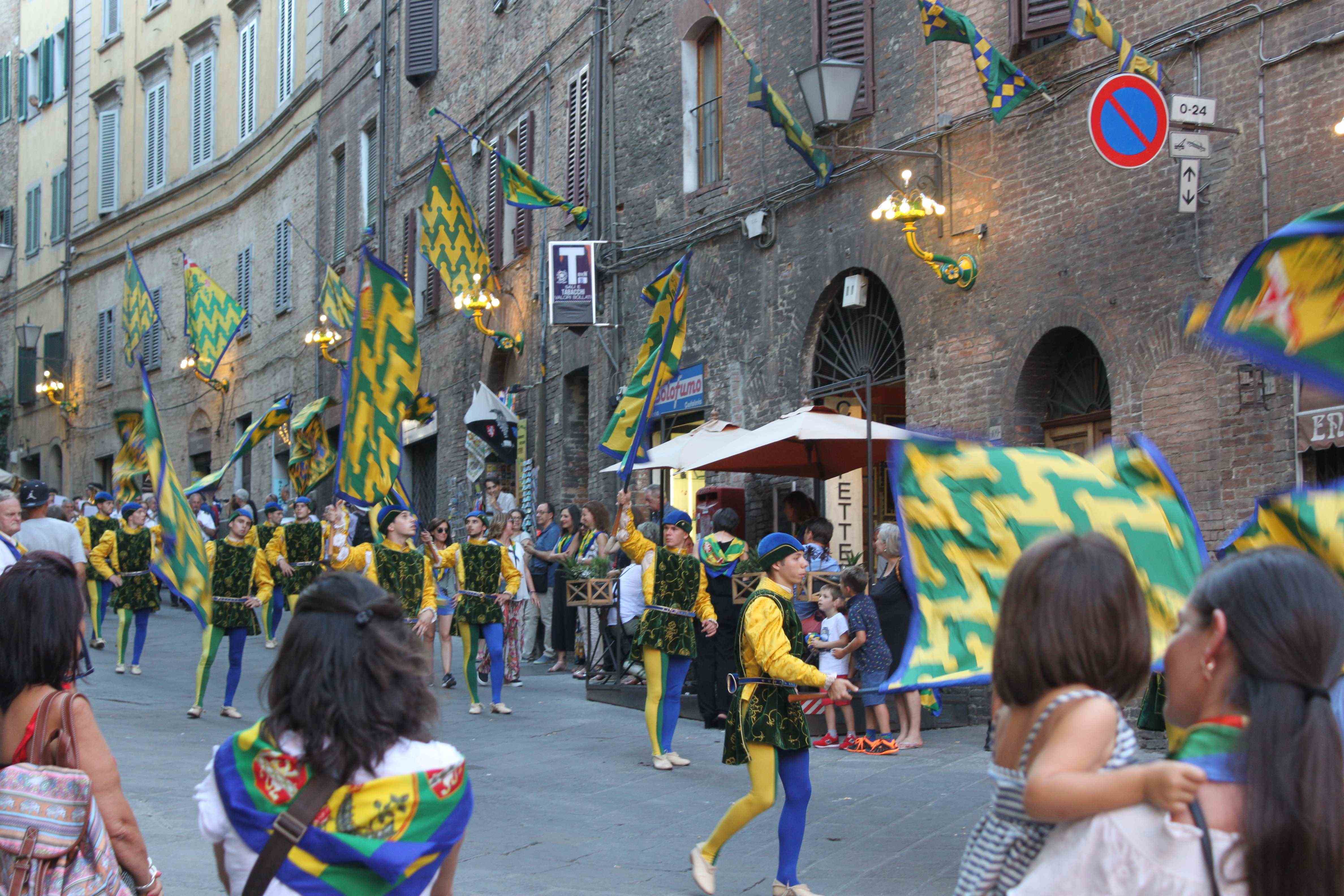 Here's a photo of a parade we stumbled upon. And the gathering in the Piazza del Campo when they decided who was going to participate in the next race.
Here's a photo of a parade we stumbled upon. And the gathering in the Piazza del Campo when they decided who was going to participate in the next race.
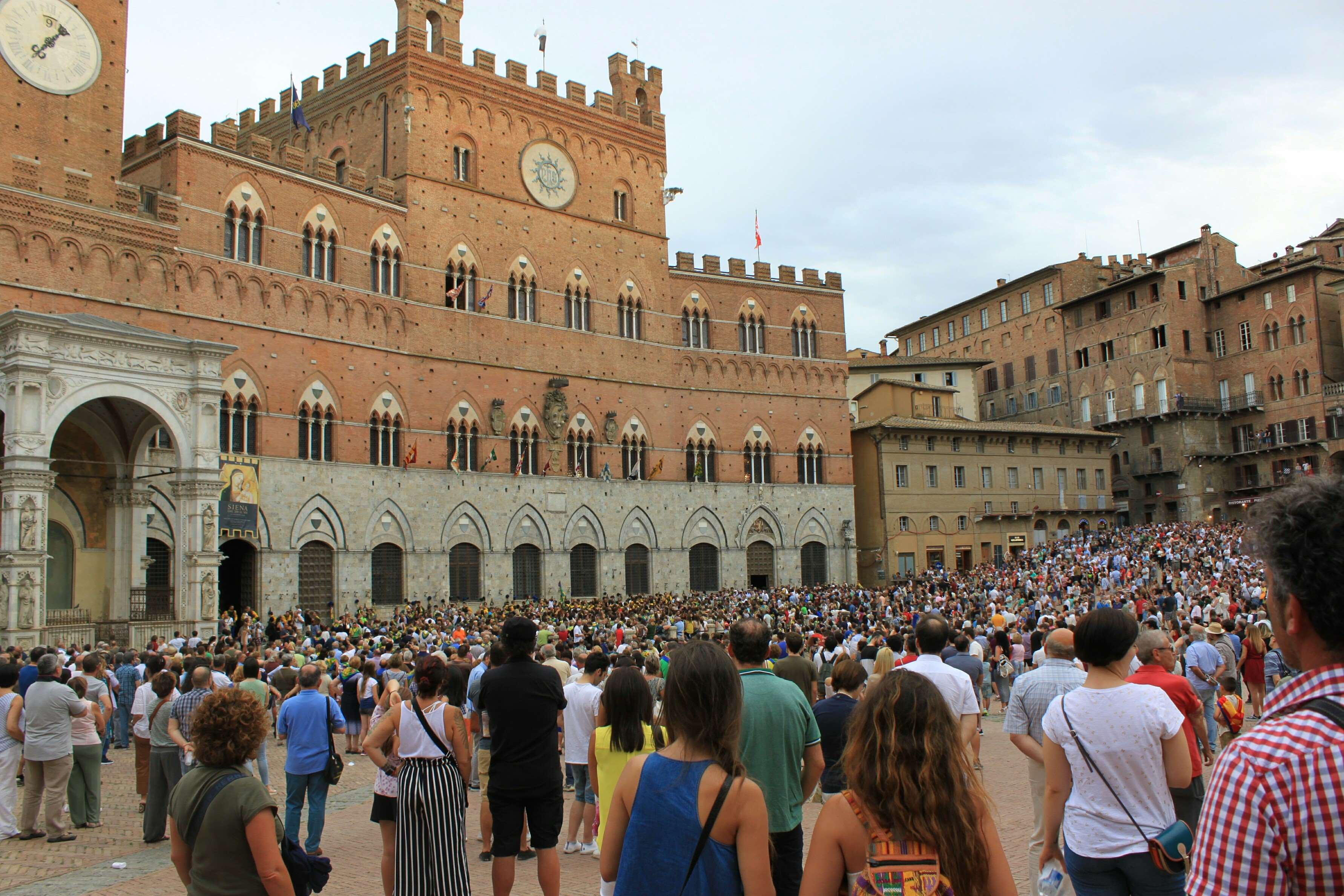
Our first night, there was a celebration in the main square with a band playing and general merriment. Sitting on the warm, sun-baked tiles with the stars blazing above, music wafting over the sultry night air, surrounded by my family, will be an enduring memory of my time in Italy. If you have the chance, visit Siena, especially if you can coincide your visit to early July.
The next stop on our itinerary was Venice. I had been here years before but with my brother (so not romantic). I do like Venice but have found it's the kind of place you visit once and you're done. The main tourist attractions like the Rialto Bridge or St. Mark's Square are overcrowded and after five minutes I'd had enough of people jostling for the best photo. 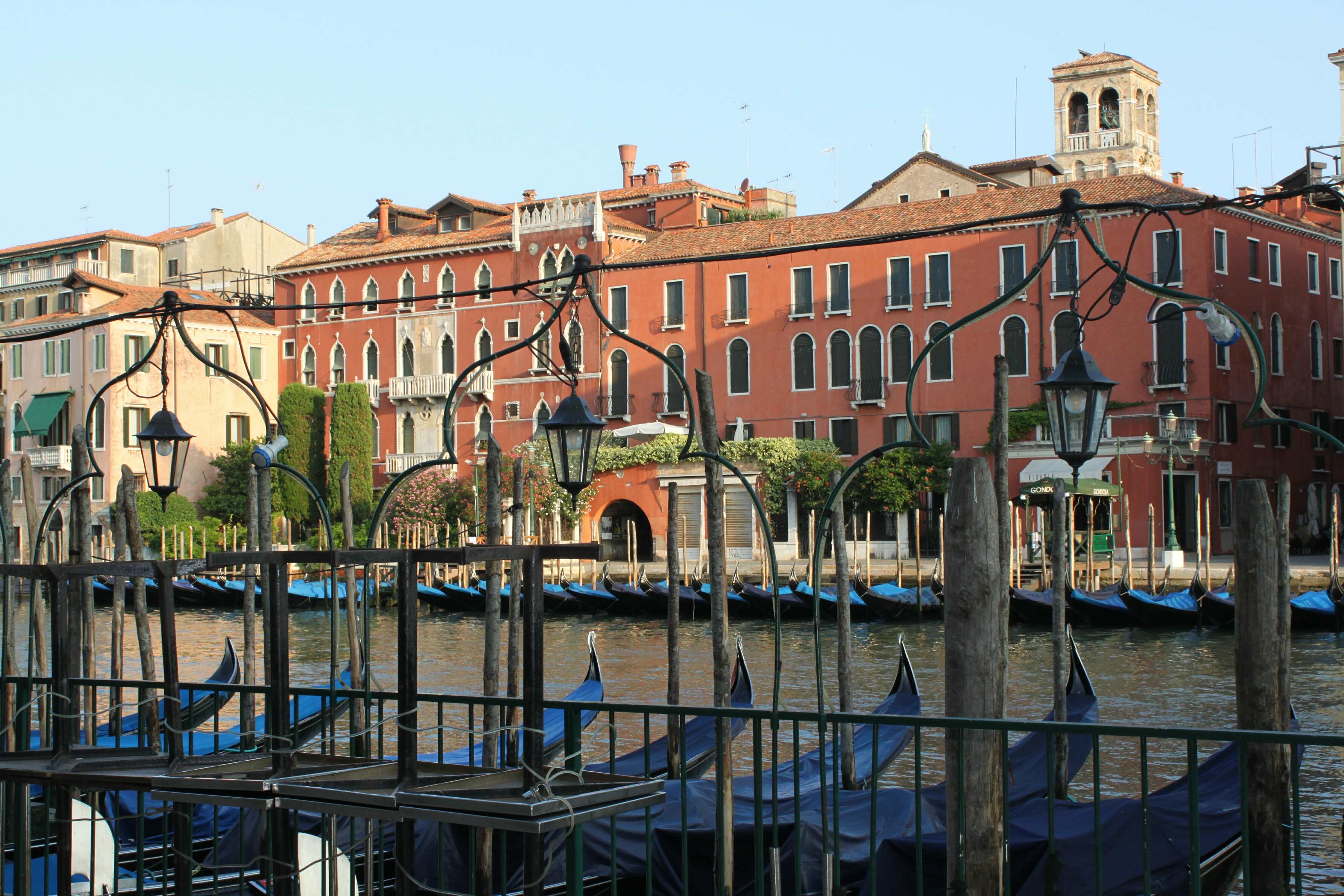
If you're going to do a little shopping, compare prices. It seems every store carries almost the same thing but those that are farther away from the main squares and tourist attractions are a few Euros cheaper. Although I only saw these snazzy pair of underpants in one store.
Venice was our last overnight stay in Italy before we headed to France. First of December I'll be recounting our adventures in French rail travel. Hope to see you then.
Ciao!
Rome, Italy - Take 2
- Details
- Written by Alexia Alexia
- Hits: 3969 3969
Umm, for any who checked back on Oct 15 for my Rome post, sorry! I was so deep in the editing cave that I completely missed prepping the mid-month blog post. The good news, however is that I will have a new release before year's end. And it takes place in Italy, the island of Sicily to be precise, so stay tuned for content and contests as the book gets closer to release.
However until then, as promised, we're heading to the Eternal City, Rome, which was the fifth stop in my recent European Adventure. As they say, all roads lead to Rome, or at least a train from the ferry which docked in Civitavecchia. This was the second time I'd visited the Italian capital, although the first with my husband and children. Our adventure began in taking a taxi from the train station to our accommodation. We're a big family ... Rome's taxis are not. We'd finally settled on taking two taxis until one driver saw it as a personal challenge to get all of us plus our bags into his car. With my husband up front and the rest of us piled in the backseat we set off on what can only be described as a rally race with no rules. I'm not sure my eldest has managed to get her butt cheeks to unclench yet.
Having survived the taxi ride, the next morning we set off to explore. You know how they say the Roman empire built long, straight roads that were an engineering marvel of their time? Yeah, they didn't apply that to their home city. Plus, it was blinking hot. By the time we'd decided that the lines to get into the Colosseum were too long, then walked to Trevi fountain and the Spanish steps, we'd practically melted.
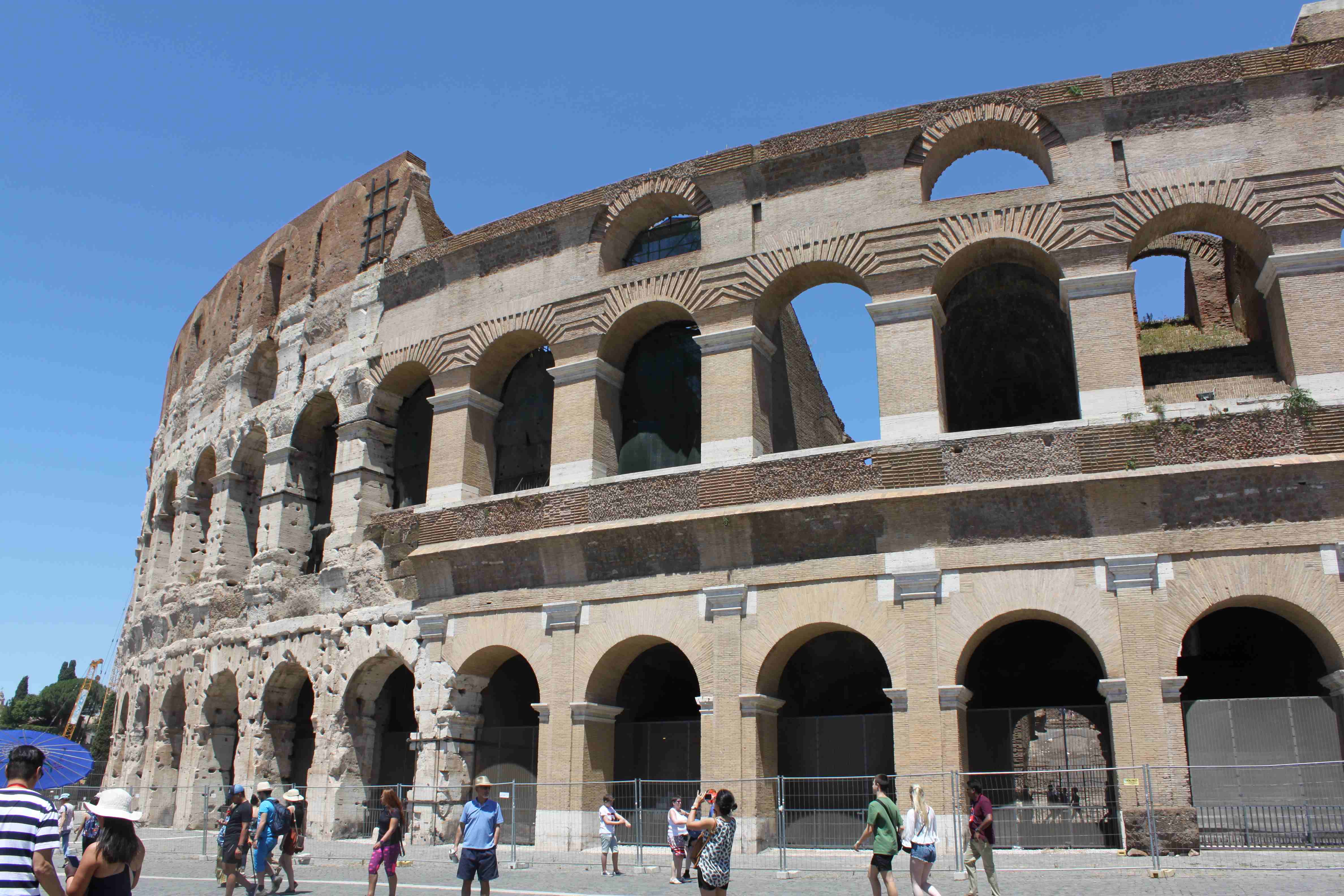
A gelato and a lukewarm drink at a small cafe temporarily restored our ability to function and we were about to take the metro back to our home-from-home and head out again when it was cooler. Except the metro was on strike. So forty-five long minutes later we dragged ourselves into the apartment and became puddles on the cool, marble flooring.
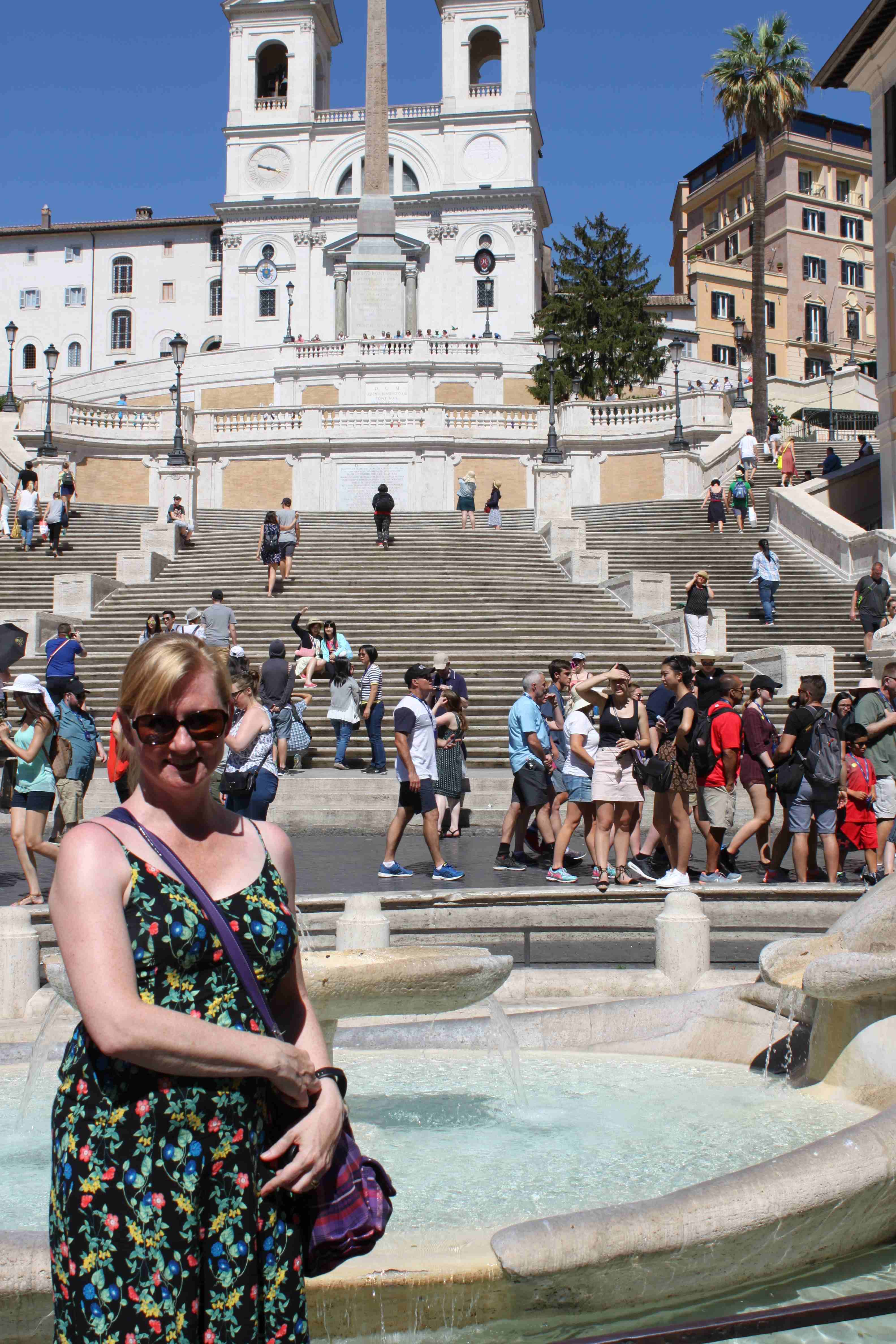
Dinner that night, however, made up for the day's discomforts. Just around the corner was a little family-run restaurant serving the best seafood cannelloni I've ever eaten. Sorry, no photos, I couldn't put my fork down long enough to snap a shot. The next morning we got up early and headed to the Colosseum before the lines got too long. Children under 18 get free entry so that was a bonus.
An amusing thing happened on our way to dinner our second night. My twelve-year-old had selected the restaurant and was directing us there. While making sure we were on the right street, a kind lady asked if she could help. After confirming that we were where we were meant to be, she asked if we were going for dinner. We said yes and then walked to the restaurant at the end of the road. When we went in, the owner asked us to wait for five minutes while they rearranged some of the tables. As the place was tiny we stepped back outside. Well, the lady who had helped us with directions obviously thought that wasn't good enough. She went into the restaurant and a second later came out and said they would take us now and look after us like family. We had a great meal and I tried saltimbocca as the English description said it was a "typical Roman meal." It was fantastic. As was the limoncello that brought an end to all my meals in Italy.
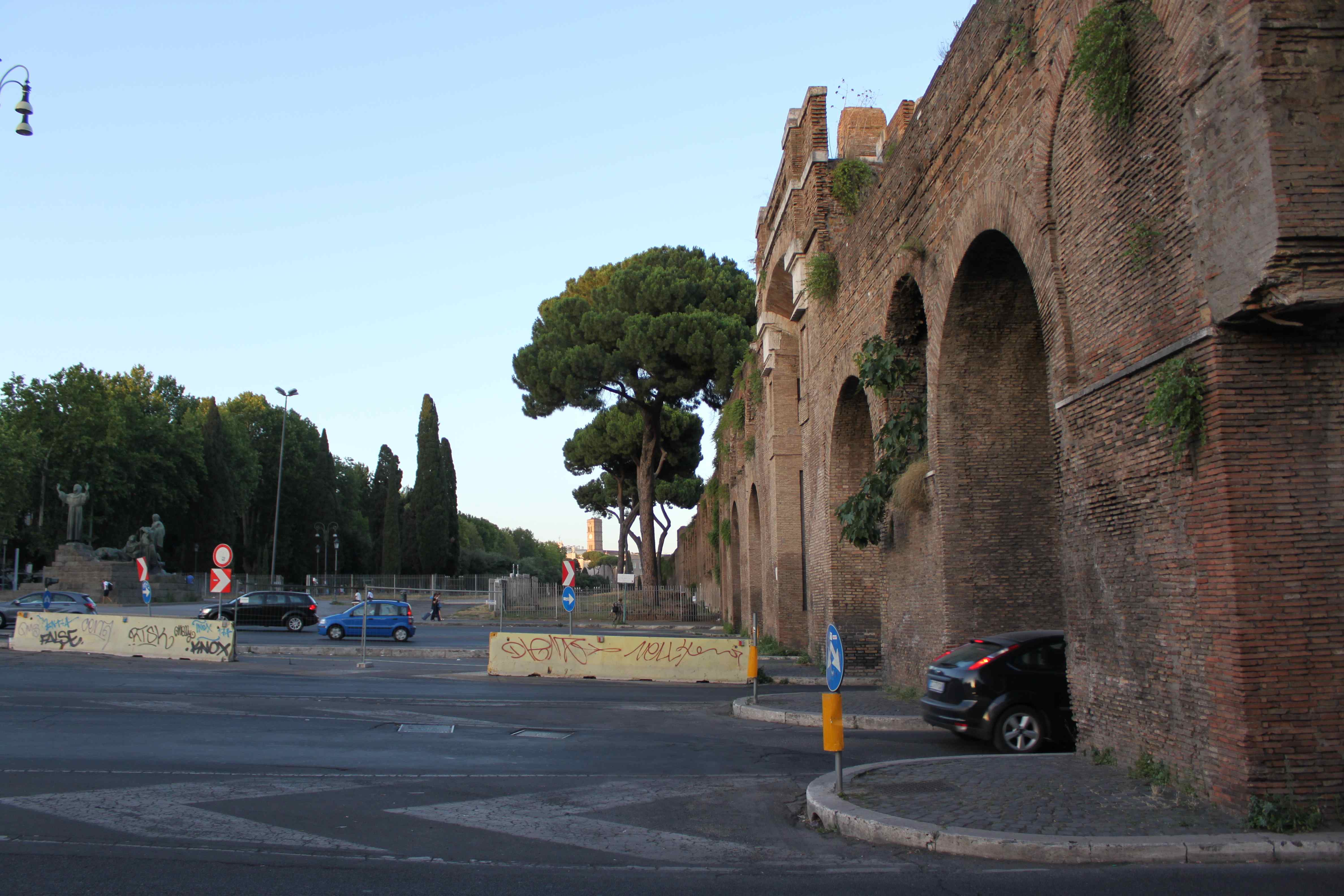 It's a shame though, that Rome was so dirty. There was garbage everywhere and rarely a building or sign not tagged with graffiti. And even for me, it was just too hot to wander. But around every corner was a glimpse into the pat that my active imagination filled with a thousand stories. Rome is an amazing city for the romantic.
It's a shame though, that Rome was so dirty. There was garbage everywhere and rarely a building or sign not tagged with graffiti. And even for me, it was just too hot to wander. But around every corner was a glimpse into the pat that my active imagination filled with a thousand stories. Rome is an amazing city for the romantic.
Next, we headed to Tuscany. Join me in the middle of the month (hopefully I'll remember) when I'll regale you with stories of one of the quirkiest places I've ever visited. Ciao!
Barcelona, Spain
- Details
- Written by Alexia Alexia
- Hits: 3824 3824
Yeah, I'm still harping on about my recent trip to Europe. Today we're heading back to Barcelona. Ed Sheeran sang about it, it's long been a city renowned for it's diverse architecture--heck they've been building a church for over 130 years--and it was the last place I visited in Spain.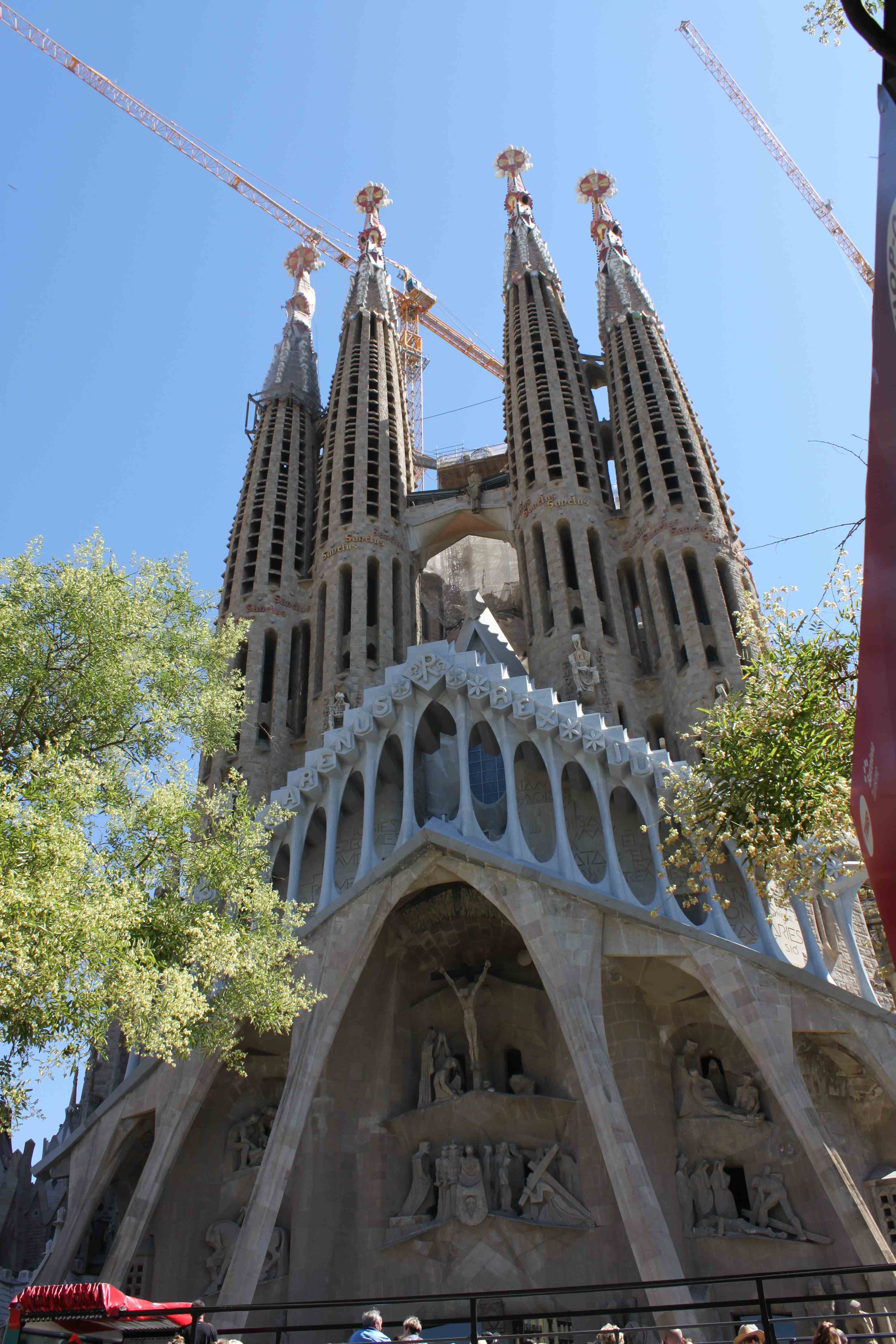 Ah, Barcelona. With its sandy Mediterranean beaches, chic shops and suave, sophisticated style, it's a city that can hold its own on the world's stage. It's also become a major destination for Brits and I heard more English spoken on the streets than Spanish.
Ah, Barcelona. With its sandy Mediterranean beaches, chic shops and suave, sophisticated style, it's a city that can hold its own on the world's stage. It's also become a major destination for Brits and I heard more English spoken on the streets than Spanish.
Barcelona has a lot to offer travelers, from simple amusements such as strolling Las Ramblas, or checking out the street artists in Ciutadella Park, or admiring men who take their fitness routines very, very seriously.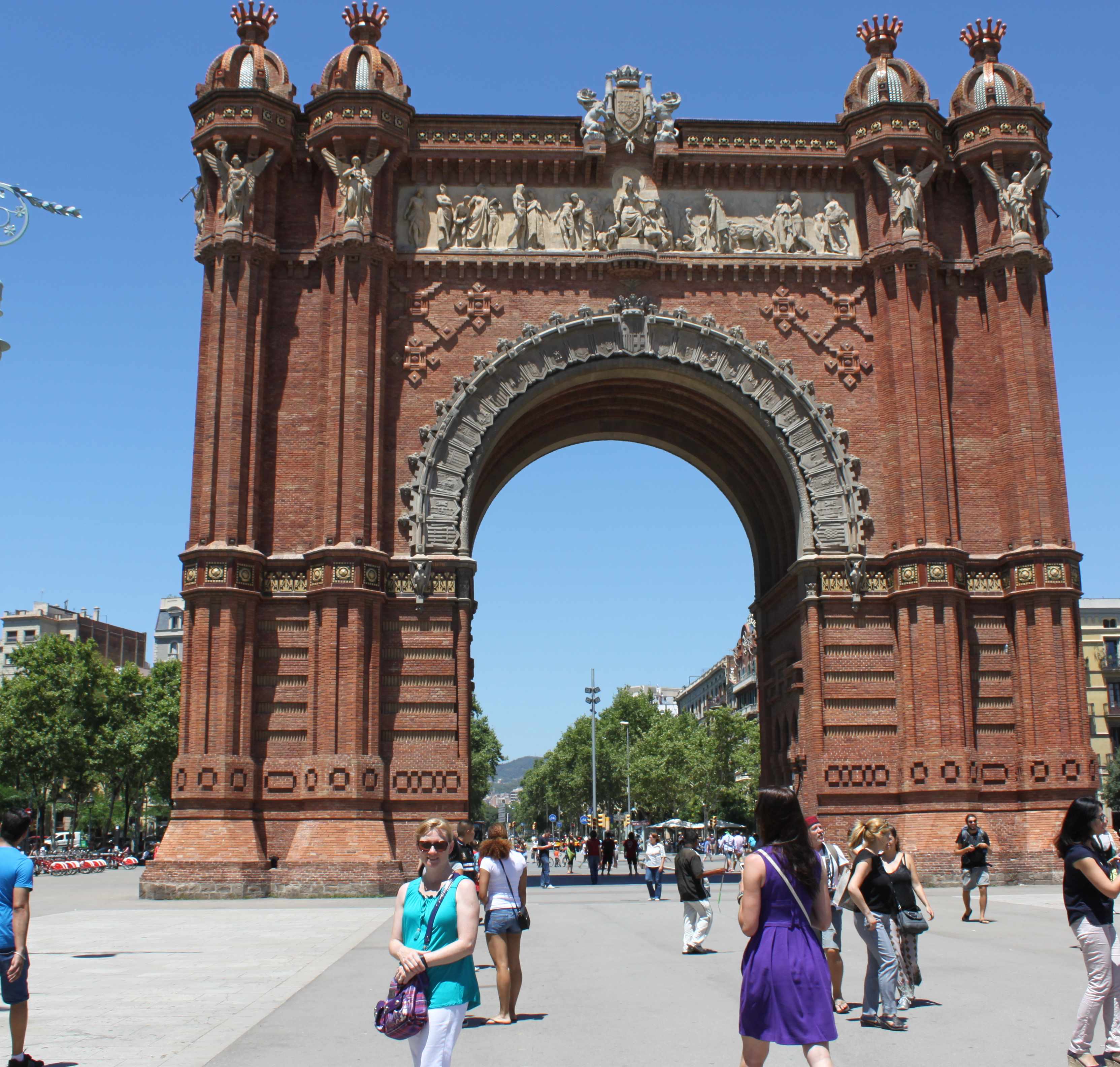
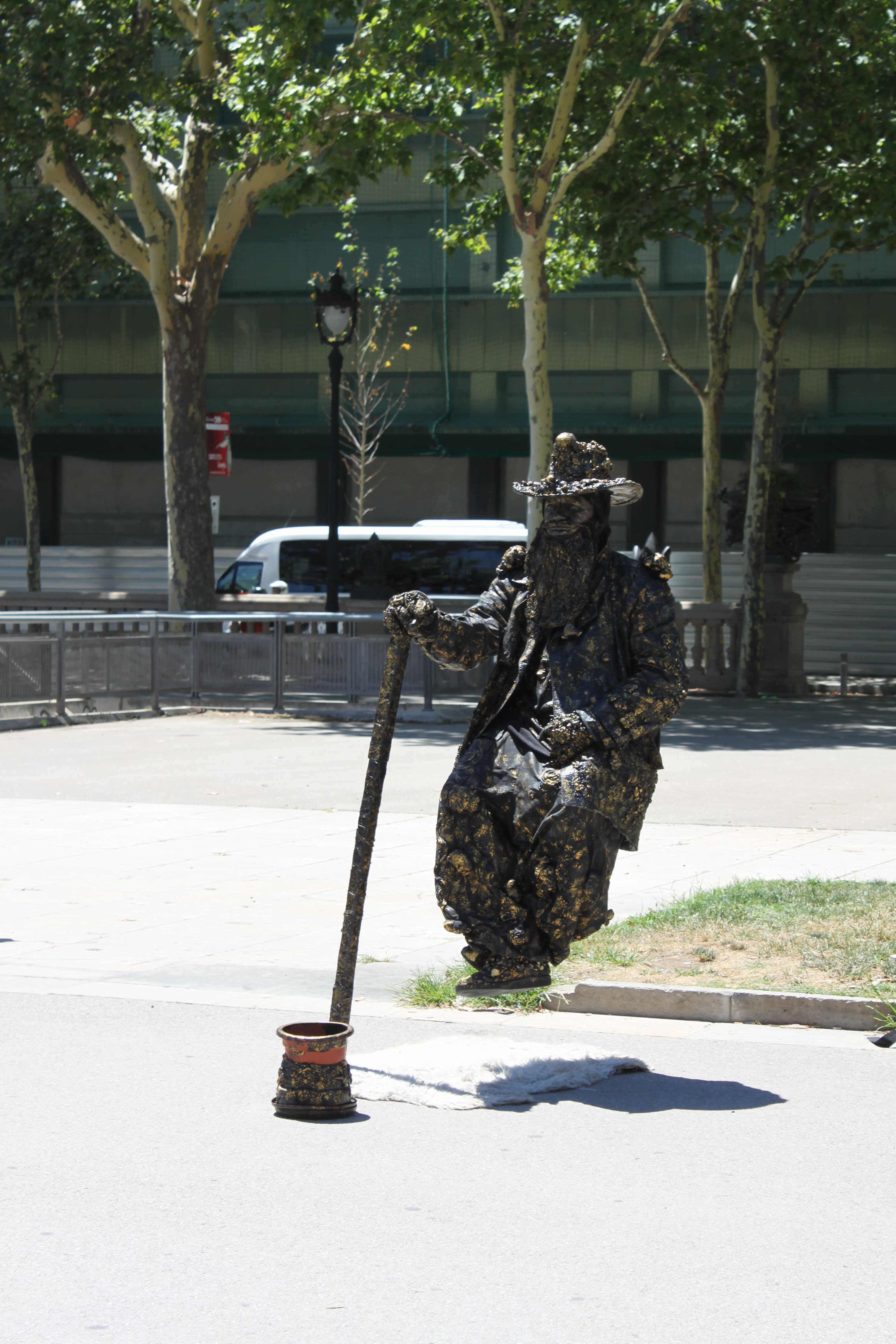
Wide, tree-lined boulevards were equally numbered with twisty, narrow alleyways filled with tiny boutiques and, of course, the usual souvenir shops. If you're into cats then these shoes may be just what you're looking for. 
My quest for the ultimate sangria also hit a high with one made of cava, the sparkling Spanish wine. Sorry, it was quaffed down before I could take a photo. I also had a real, proper tapas meal, although we ended up having to order a hamburger for my picky eater child. The deep fried artichoke hearts, mushroom medley, and fall-off-the-bone lamb chops were amazing.
Unfortunately, Barcelona also marked the time to say goodbye to Spain and we hopped aboard a ferry (the cheap version of a Mediterranean cruise) and sailed off to our next destination. See you back here on the 15th when I'll be talking about the Eternal City.
Until next time!
Granada, Spain
- Details
- Written by Alexia Alexia
- Hits: 4540 4540
Another post harking back to my recent European vacation...
When planning this escape, there was one place in Europe I definitely wanted to see--the Alhambra in Granada, Spain. I've always been enchanted by Moorish architecture and design. From Madrid (see previous post) we travelled to Jerez in the south of Spain and stayed in a small hotel that was originally a Moorish house. Jerez is an old city, its founding going back centuries. It's also the center of sherry production and the reason I travelled here. But as rich as the fortified wine, the culture of the place intoxicated me as well.
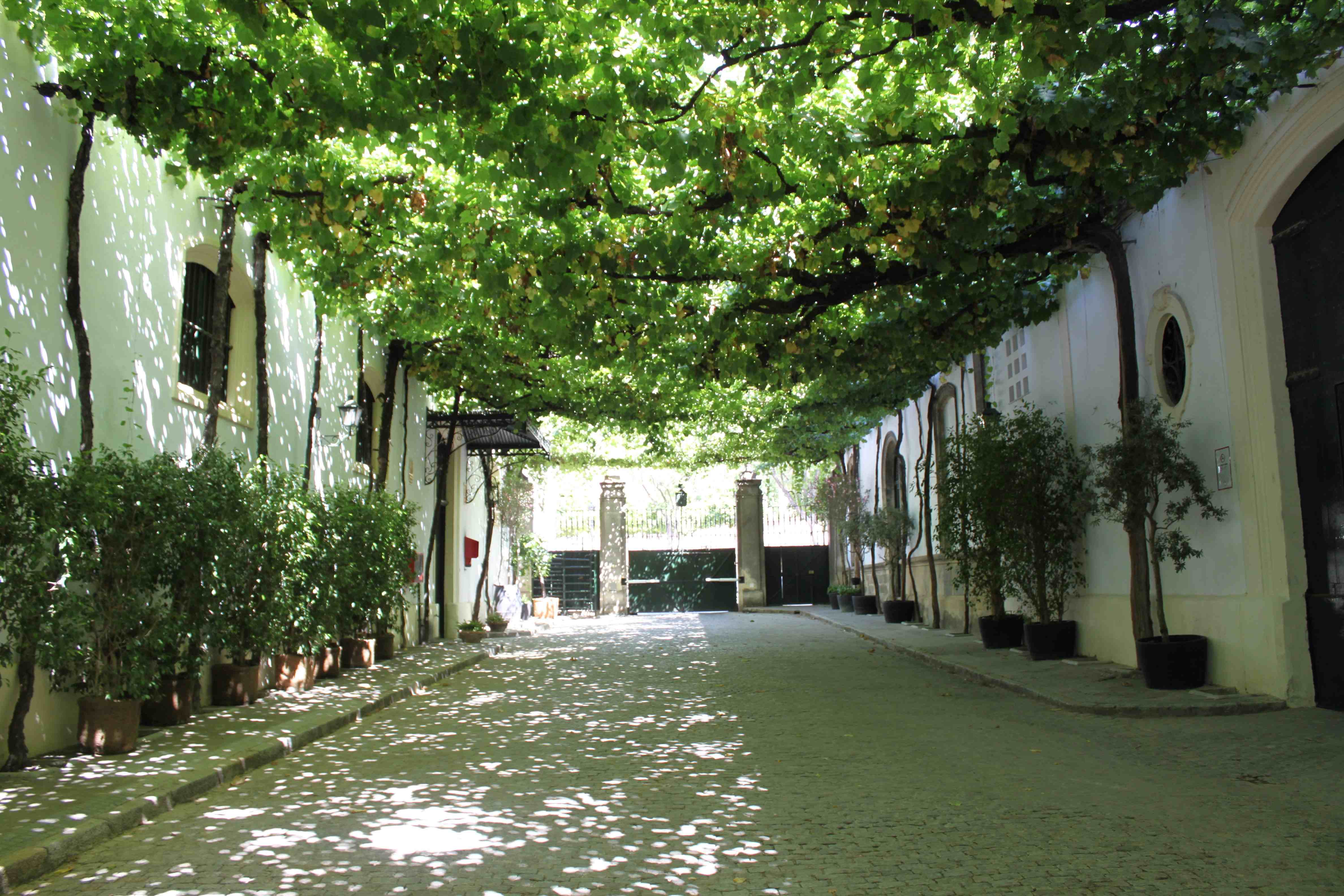 Back to my dream destination - Granada is a city an hour inland from the Costa Tropical where we stayed in Almunecar. If I'd had more time, I'd love to have spent a day or two exploring this place. As it was, we had only several hours to visit the Alhambra, an ancient Moorish palace/fortress and gardens. And, a word of note for anyone planning to visit:book ahead. We weren't able to explore one part of the grounds as the allotment of tickets had already been sold out before our arrival. What we did manage to see, however, was stunning.
Back to my dream destination - Granada is a city an hour inland from the Costa Tropical where we stayed in Almunecar. If I'd had more time, I'd love to have spent a day or two exploring this place. As it was, we had only several hours to visit the Alhambra, an ancient Moorish palace/fortress and gardens. And, a word of note for anyone planning to visit:book ahead. We weren't able to explore one part of the grounds as the allotment of tickets had already been sold out before our arrival. What we did manage to see, however, was stunning. 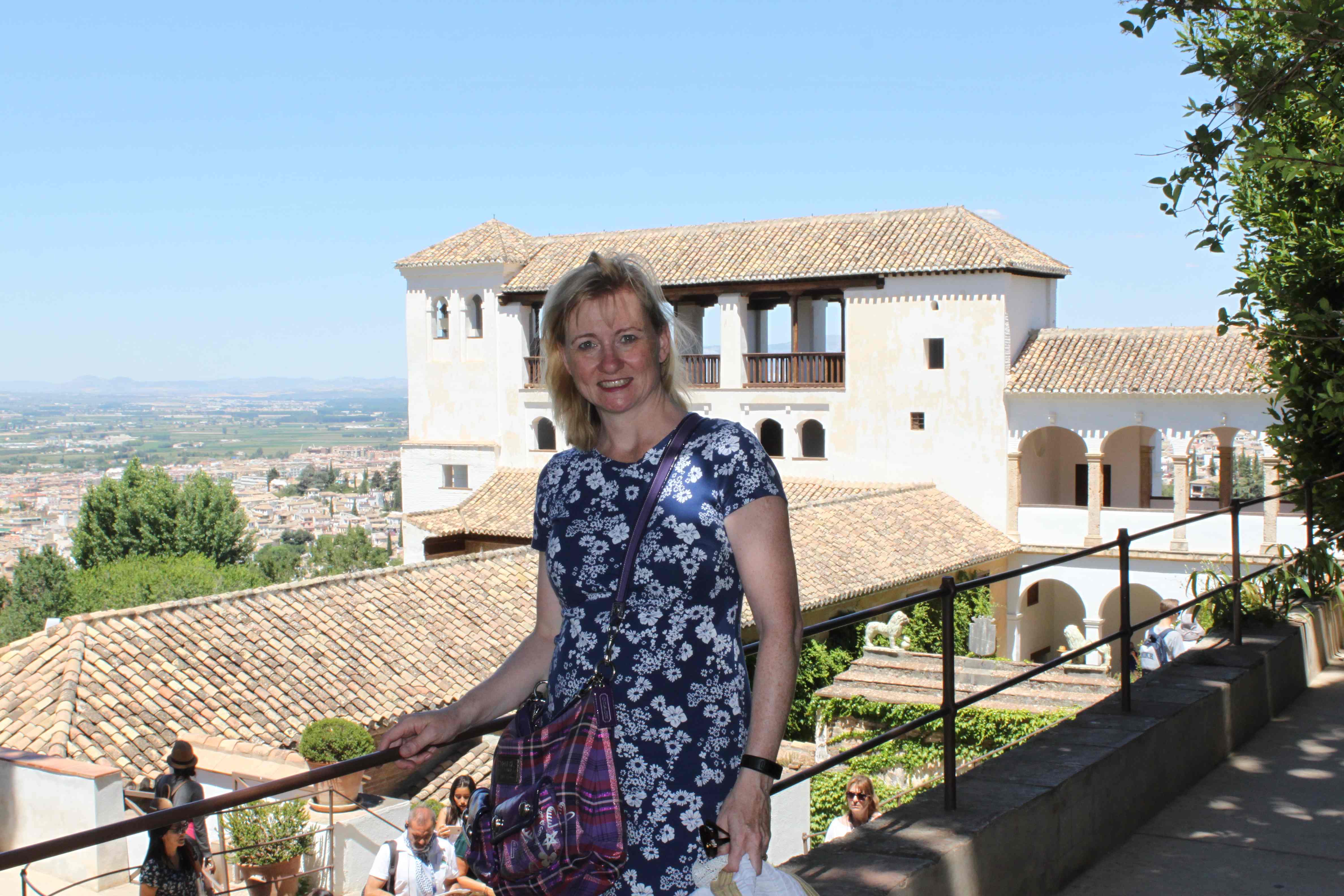
For the Moors, water was an important feature in their design and the Alhambra is teeming with examples: from fountains, streams that ran along the stairs, and water features that delight child and adult alike. Also common in the culture is the intricate carvings of the ceilings and borders at the top of the wall.
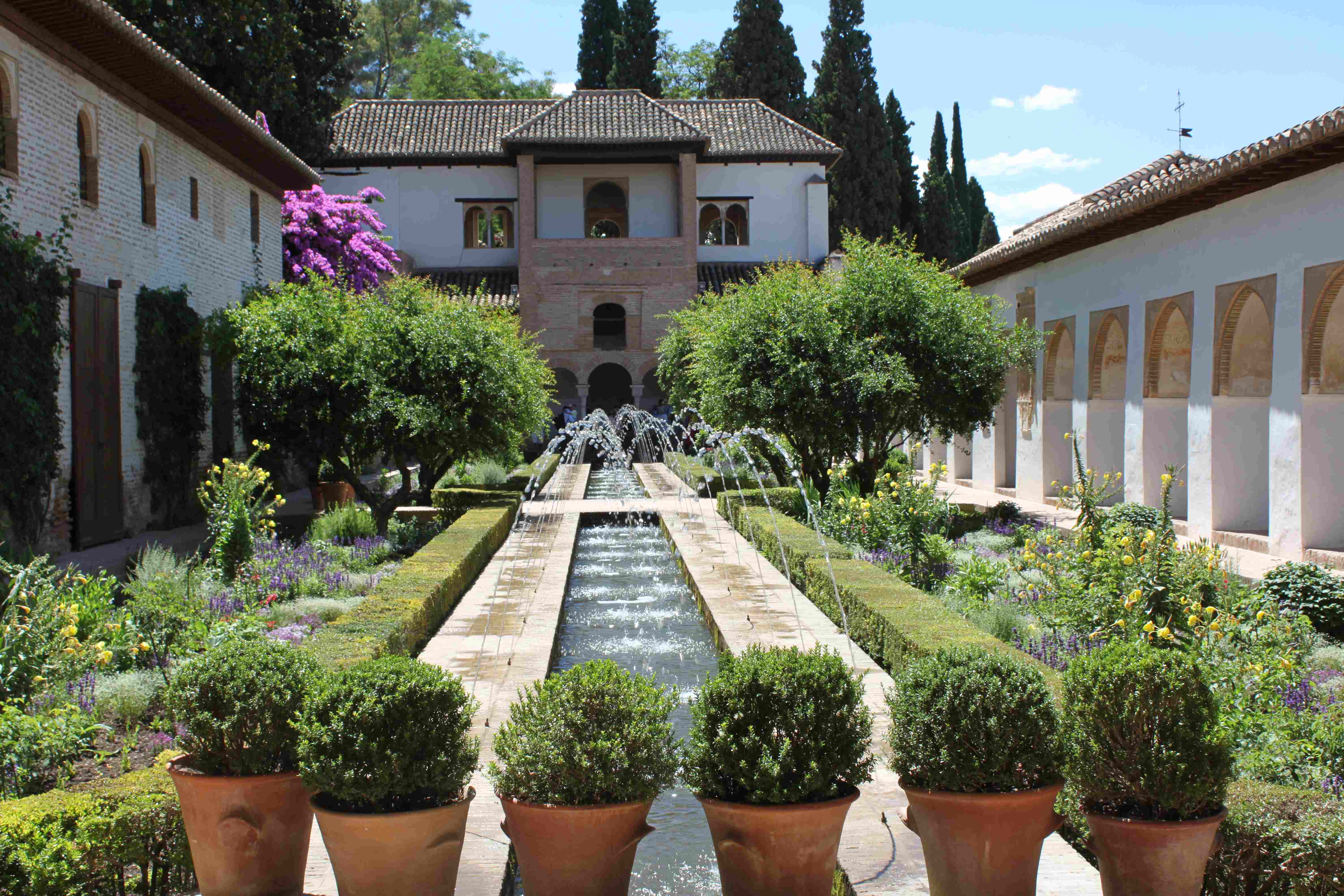
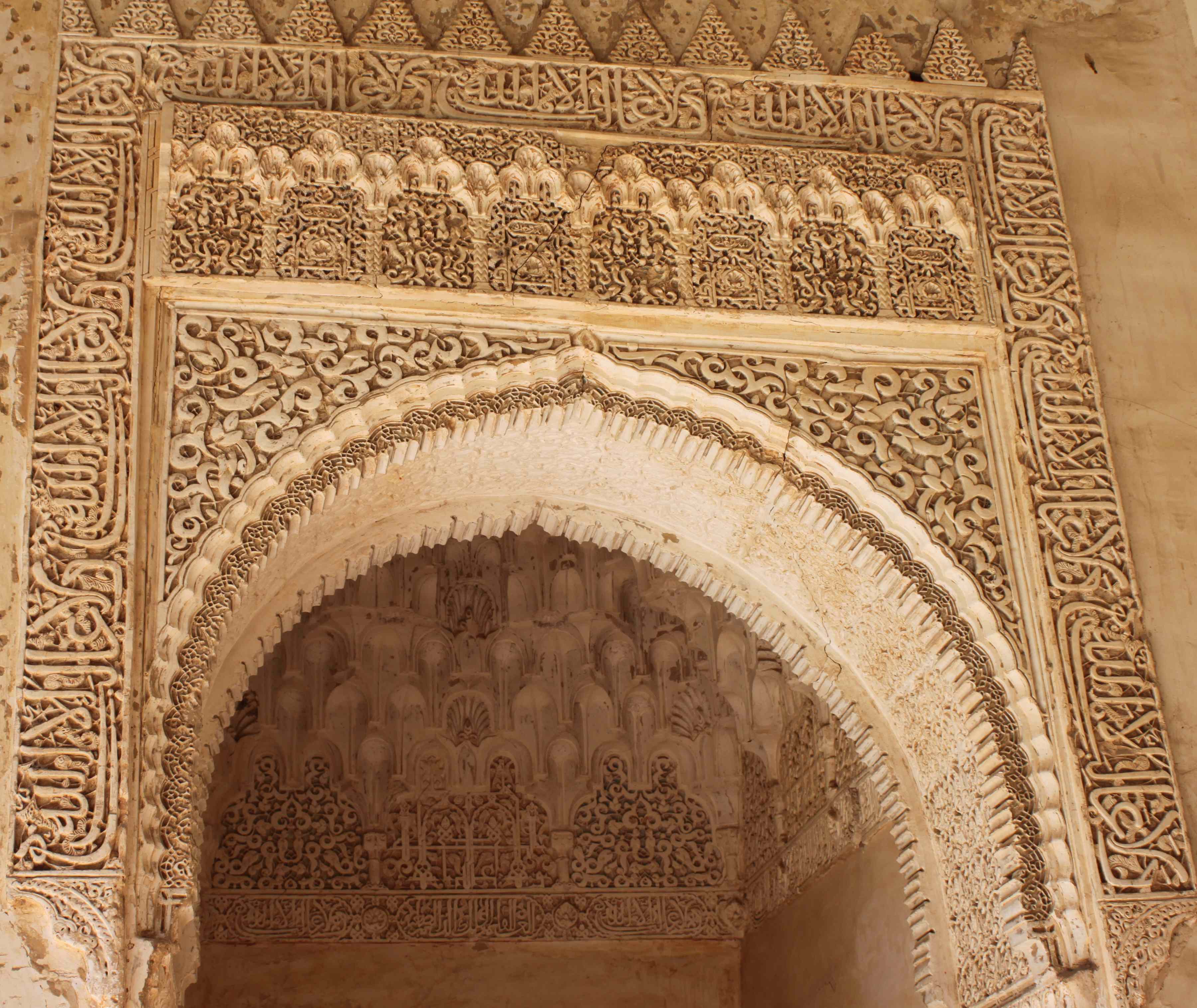
From the vantage point high above the city of Granada, I could see that many of the houses were of Moorish design with the rooms built around a central courtyard like our hotel in Jerez. There were also wide tree-lined boulevards and impressive tile designs.
Although this was only a brief one-day stop in our European Adventure, I was so glad we took the time to visit. Next time (and yes, dear husband, there will be a next time), we'll stay longer.

Next post we'll head north to Barcelona. Until then...happy reading.
Madrid, Spain
- Details
- Written by Alexia Alexia
- Hits: 4081 4081
I'm back, at least in body. My spirit still wishes it were in Europe. So, to keep the holiday buzz going as long as possible, I will recap the posts that appeared on the Entangled in Romance blog under the Flight Risk Mom Friday banner. Some of the photos will be different, so if you've already read the posts, then at least check out the pictures. Here we go, Europe take 2:
I started my adventure in the capital of Spain. This is my first trip to this amazing city and I'm so glad I included it in my itinerary. My favourite place is Retiro Park where I wandered for over an hour enjoying the peace and tranquility in the middle of this vibrant city (well, as tranquil as it can be with four children). With a large pond, amazing buildings, and little hidden gems, I could have spent longer exploring every inch of this place.
No time to linger, however, it was off to the royal palace.
After lunch and siesta (after all, when in Spain...) we headed out into evening Madrid. The place was hopping and the street artists the best I've ever seen. We did a little pastry ogling and shoe shopping...
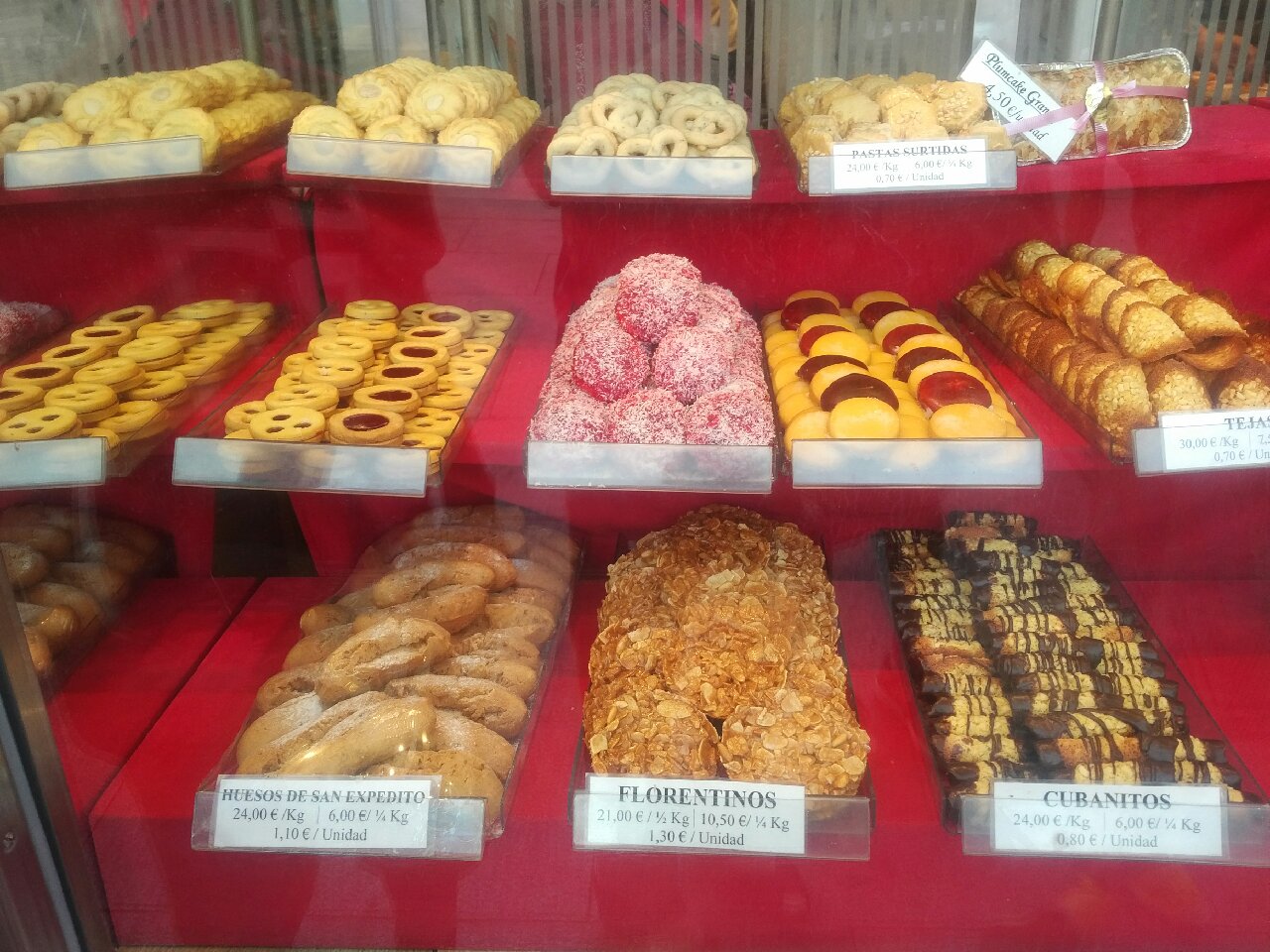

...then stopped for dinner--paella and sangria, of course.
The next day there was a street market near where we stayed so we wandered and bought some ripe, succulent apricots. I snapped a photo of this interesting pair of boxers. Two thoughts came to mind: first, if you have to advertise, it's probably not as big as you think; second, that's an odd place to store a banana.
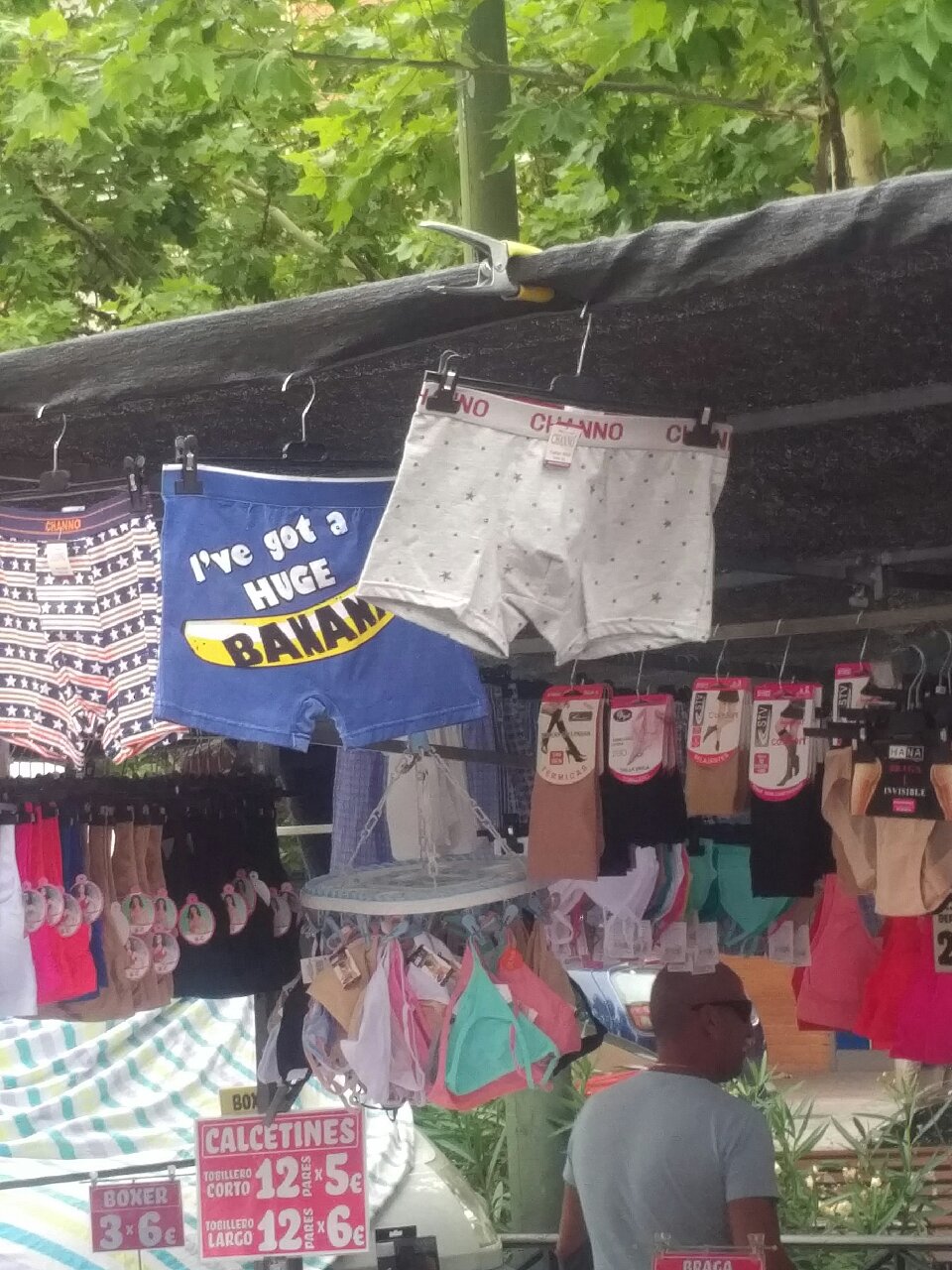
Unfortunately, that's all we had time for in Madrid. Next we went to Jerez then to the Costa Tropical. Check back next post when I'll be talking about the one place I absolutely wanted to see on my European holiday. And I wasn't disappointed.
¡Hasta luego!
Taking a Break
- Details
- Written by Alexia Alexia
- Hits: 3825 3825
You may, or may not, have noticed that I didn’t post on April 15. And as much as I’ve wracked my brain, I can’t come up with inspiration for today either. The well is dry and I need to replenish. I also have some family things and health issues stealing my concentration. So, this will be my last blog post until September 1, 2017. But when I return, I’ll have lots of new material so if you are subscribed, please hold on, I’ll be back.
Also, I’m going to turn off the commenting function on my blog as it’s just being used to spam me. Genuine fans can always contact me using the aptly titled “contact me” page on my website. If you can’t wait until September to hear from me and want to know what I’m up to, follow me on social media or sign up for my free newsletter. See you back here in September.
Seattle, Washington, USA
- Details
- Written by Alexia Alexia
- Hits: 4047 4047
 We’ll flit back up to the northern hemisphere and visit the nearby (at least to me) city of Seattle. I visited there for a weekend a few weeks ago with my teenage daughter and two of her friends. Although Seattle is near (about a 3 hour drive) I haven’t visited the downtown city center for decades. And I was pleasantly surprised.
We’ll flit back up to the northern hemisphere and visit the nearby (at least to me) city of Seattle. I visited there for a weekend a few weeks ago with my teenage daughter and two of her friends. Although Seattle is near (about a 3 hour drive) I haven’t visited the downtown city center for decades. And I was pleasantly surprised.
We stayed at a hotel near the Monorail/Space Needle. It was a nice place but unfortunately we were given a room by the reception desk and kitchen. Between loud guests coming in very late and very drunk (more likely high given Washington’s marijuana laws, be prepared to smell it everywhere) and the start of breakfast preparations at 5 am, I managed only about two or three hours of sleep. Next time I will insist on a room farther into the hotel.
The other slight niggle on our trip was the weather. I know, it’s Seattle, it’s going to rain. Unfortunately, being fashionable was more important than being dry for my girls. However, we were gifted with a glimpse of the sun on Saturday afternoon so the city was redeemed.
There is surprisingly a lot to do in the downtown core, especially if you have an interest in photography. Pike Place Market is a veritable cornucopia of interesting sights, sounds, textures and smells. And if I were a resident of Seattle I’d be down there every Saturday (not sure if they’re available every day or just on the weekend) to buy one of the amazing and very reasonably priced flower bouquets. I especially enjoyed seeing all the men carrying them around. Quaint little shops and eateries are everywhere as well as little vignettes over the harbor. It would be a great place to spend a day but be aware that at least on Saturdays the place is extremely crowded. As for the famous flying fish, you have to wait until someone buys one. I didn’t have that kind of patience, especially given the crowds.
There’s also the original Starbucks nearby if you worship at that church but again, be prepared to stand in a long line. And the more than slightly disgusting gum wall is an odd tourist attraction. It’s down a little alley, almost under Pike Place and is the kind of place that appeals to teenagers. If you’re beyond the age of 21 then I suggest giving it a miss. We had a fabulous dinner at a Mediterranean restaurant and then, one of the very best things about Seattle—you can buy alcohol at the grocery store. So while the teens were all updating their social media accounts and watching vloggers I was able to enjoy a nice glass of wine while wearing a pair of my $10 bargain high heels. All in all, a good weekend. Next time, though, I think I’ll take my husband and he can drive through Seattle’s notoriously bad traffic.
I have no idea where we’ll end up on April 15 so you’ll have to pop back then. Until mid-month, happy reading!
Santiago, Chile
- Details
- Written by Alexia Alexia
- Hits: 4179 4179
 We’re hanging a right from Tonga, heading across the south Pacific and landing in Chile today. I’ve always wanted to visit Chile and its capital, Santiago. Some say Chile is comparable to my home country of Canada—it has a similar standard of living and climate. It’s also nestled between the mountains and the sea, much like Vancouver (although it’s a couple hours’ drive in either direction for Santiago whereas they’re within minutes in Vancouver). I think that after the grand European adventure this year I may start planning a South American expedition.
We’re hanging a right from Tonga, heading across the south Pacific and landing in Chile today. I’ve always wanted to visit Chile and its capital, Santiago. Some say Chile is comparable to my home country of Canada—it has a similar standard of living and climate. It’s also nestled between the mountains and the sea, much like Vancouver (although it’s a couple hours’ drive in either direction for Santiago whereas they’re within minutes in Vancouver). I think that after the grand European adventure this year I may start planning a South American expedition.
As with many cities, the neighbourhoods of Santiago each have their own flavour. The Centro district has the museums, fabulous architecture and pedestrian malls. Other areas, notably Barrios Brazil, Lastarria and Bellavista are known for their nightlife with sidewalk cafés, restaurants, and beer halls. Whereas Providencia and Las Condes are home to upscale restaurants and world-class hotels.
If you’re a fan of Pablo Neruda, you may want to stop by La Chascona where he used to hang out with his mistress. These days it’s a museum, complete with ship’s cabin inspired dining room and lighthouse-themed living room. Unfortunately, many of the objects d’art and paintings were lost when the house was ransacked. It’s advised is to book ahead at least a day if you want to visit.
For me, I’d plan to spend time in one of the city’s many parks, especially Cerro San Cristobal. There are several “gardens” and sweeping views of the city and Andes mountains in the background. Funiculars can give you a lift from Plaza Caupolicán up the hill and to the various attractions within the park. Of course, one of my main reasons for visiting Chile would be to sample more of the wine. Santiago is ideally placed to enjoy the nearby vineyards.
There are hundreds of other things to do in Santiago—markets, museums, art galleries and cafés. Not to mention the country’s national library with high ceilings, stained-glass windows, antique furniture and, of course, books. Santiago is sure to keep me busy for several days.
Until next time then, adios!
photo credit: Marco Nürnberger Mountain Metropolis via photopin (license)
Tonga
- Details
- Written by Alexia Alexia
- Hits: 4534 4534
 It’s March 1st and there is still snow on my front lawn and more in the forecast. So I’m going to spend one more blog post in the South Pacific, visiting Tonga where the temperature today is 28C. However, before we jump on our virtual plane and head to this tiny Polynesian kingdom, can we take a tiny commercial break? My next book, Masquerading with the Billionaire comes out on March 13. After reading this post, be sure to pop over to the excerpt page to read the first chapter (and if you like it, preorder the book). If you’re in the United States, you can enter to win a print copy of the book here. And make sure you head back to my website on March 15 when I’ll be sharing links to all the contests and guests blog posts that will accompany the launch. Now, back to Tonga.
It’s March 1st and there is still snow on my front lawn and more in the forecast. So I’m going to spend one more blog post in the South Pacific, visiting Tonga where the temperature today is 28C. However, before we jump on our virtual plane and head to this tiny Polynesian kingdom, can we take a tiny commercial break? My next book, Masquerading with the Billionaire comes out on March 13. After reading this post, be sure to pop over to the excerpt page to read the first chapter (and if you like it, preorder the book). If you’re in the United States, you can enter to win a print copy of the book here. And make sure you head back to my website on March 15 when I’ll be sharing links to all the contests and guests blog posts that will accompany the launch. Now, back to Tonga.
The sovereign state of Tonga consists of 176 islands, although only 36 of them are inhabited, spread over an area roughly the size of Texas. There are just over 100,000 Tongans and 70% of them live on the main island of Tongatapu. The country was formerly known as the Friendly Islands (I’m sure they’re still friendly, just not called that) due to the warm welcome that Captain James Cook received when he first visited. However, some claim that the chiefs wished to kill Captain Cook but couldn’t come up with an appropriate plan. Maybe not so friendly after all.
Tonga was a British protectorate from 1900 to 1970. In 2010 they moved toward a constitutional monarchy away from the former absolute kingdom. Tonga is the only Pacific nation to retain its monarchial government and has had an uninterrupted succession of rulers from the one family. Sounds like a great setting for an island princess story.
As soon as you arrive in Tonga, make sure you adjust your clocks to island time – where there’s nothing that can’t wait until tomorrow (although I believe medical science may argue this point). Also, there’s no need to take a Tongan cultural experience, just open your eyes. The locals are friendly and authentic. As you can imagine, with 176 (or 169 depending on which source you consult) islands, beaches and water sports are the most popular choices for tourists to while away the hours. From what I’ve read, church-life is all pervasive so don’t plan anything for a Sunday which is the official Sabbath and according to the constitution is sacred forever.
If you have the means to make it off the main island of Tongatupu, head to ‘Eua, an island forty kilometers south. Geologically the oldest island in Tonga and one of the oldest in the Pacific, this place sounds definitely worth exploring. Cliff-top lookouts, hidden caves, a limestone arch, sinkholes and a jungle rainforest await the intrepid traveler.
Well, that’s about as much as I know about Tonga. Maybe I will write that island princess story and visit the country on a research trip. Who’s with me?
photo credit: bigyahu Lovely lunch spot via photopin (license)
Fiji
- Details
- Written by Alexia Alexia
- Hits: 4227 4227
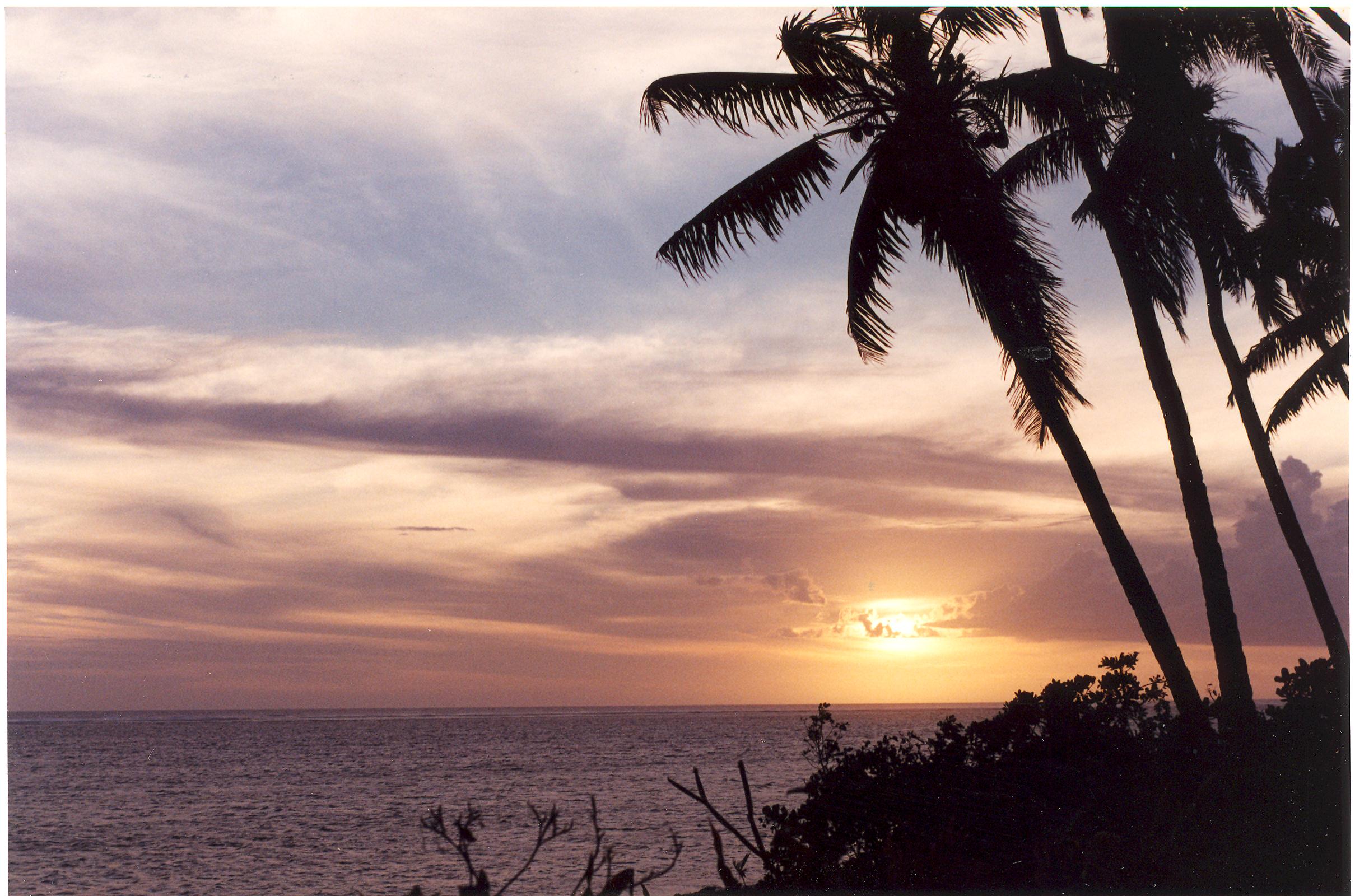 Wow, I can’t believe I haven’t blogged about Fiji before this as I’ve actually been there. Of course it was a long, long time ago as part of my first round-the-world adventure. Unfortunately, money was limited so my adventuring was as well. So let’s see what’s to do if I went again with a little more cash.
Wow, I can’t believe I haven’t blogged about Fiji before this as I’ve actually been there. Of course it was a long, long time ago as part of my first round-the-world adventure. Unfortunately, money was limited so my adventuring was as well. So let’s see what’s to do if I went again with a little more cash.
First, some background. Fiji is located in the South Pacific approximately 2,000 kilometers northeast of New Zealand’s North Island. It’s an archipelago with more than 330 islands of which 110 are permanently inhabited. Despite the amount of inhabitable land 87% of the population live on the two main islands: Viti Levu and Vanua Levu. This means that the other islands are sparsely populated and so if you’re keen to get away from it all, they may be more what you’re looking for. Fiji has one of the most developed economies among South Pacific islands as it has not only tourism but sugar production and forest, mineral and fish resources. One other interesting point (at least to me) is that Fijian place names are not pronounced like they sound so consult a good travel guide before you tell a taxi driver where you want to go or you might end up somewhere else entirely.
So let’s see what’s to do aside from soak up the sun and read (because we already covered that in Bora Bora). First, I just want to say that the official Fijian tourism website (http://www.fiji.travel) is one of the best I’ve come across so definitely check it out. The two little girls on the home page make me want to pack my bag and head straight out. I read also on the Lonely Planet site that it’s the people of Fiji who make the islands specials. So take time to talk to the locals, it may be the best part of your trip.
Also not to be missed are the water sports. The reefs around Fiji’s islands have more than 1500 species of fish and sea creatures making them a spectacular display of underwater gorgeousness. If you prefer above-water adventure, then the Colo-i-Suva Forest Park in Suva (pronounced tholo-ee-soo-va) sounds like a great place to visit. If you want to get off the tourist track, then perhaps a visit to an authentic Fijian village may be of interest. It is customary to take a gift and request permission before using any of the swim holes or waterfalls. Navilawa village is set in an old volcanic crater surrounded by lush tropical forests and mountains. Check first before you set off as the region is prone to landslides and the route may be blocked.
Whatever you decide to do, you’re guaranteed a memorable holiday. Until then, see you back here next month.
Rarotonga
- Details
- Written by Alexia Alexia
- Hits: 4385 4385
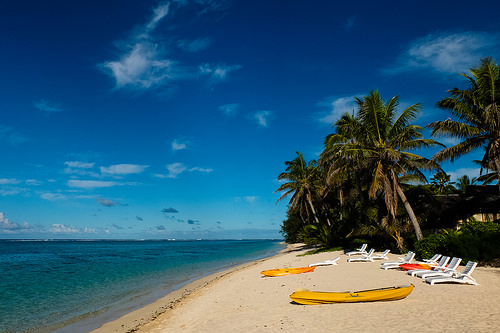 No, I haven’t started making places up for my blog. My friends recently told me that they got a great deal on a holiday there so I thought I’d check it out. As I used to live in New Zealand, the name did ring a few bells as it was once a Kiwi colony. Let’s discover this tiny Pacific island, the capital and most populous of the Cook Islands.
No, I haven’t started making places up for my blog. My friends recently told me that they got a great deal on a holiday there so I thought I’d check it out. As I used to live in New Zealand, the name did ring a few bells as it was once a Kiwi colony. Let’s discover this tiny Pacific island, the capital and most populous of the Cook Islands.
If you were to draw a line between Queensland, Australia and Bolivia in South America, the Cook Islands would be about halfway along that line. The Cook Islands are spread over an area roughly the size of India with a total population of approximately 15,000 – 10,000 of which live on the island of Rarotonga. So if overcrowding is getting you down, this or one of the outer islands may be the place for you.
Just looking at a few of the activities available on Rarotonga, I’ve already filled two nights. The first night, just to get a feel for the local culture, of course, I’d do the sunset cocktail hop by tuk tuk. The tour takes you to the best places for sipping on cocktails while watching the sun set over the reef. Sounds like the perfect introduction to island life. The next night, I’d take the ‘Fire on Water Night Paddling Tour of Rarotonga.’ Basically, you go at sunset on a paddle board or kayak and see the marine life at dusk. I believe there is also a fire dance performance which sounds cool, or I guess more accurately, hot.
If you want to see the fish but would rather not get wet, there is a glass-bottom lagoon cruise you can do however this tour comes with a warning – ukelele playing guides. If you’re not a fan of this instrument, you may want to find another option or pack headache tablets.
As in Tahiti and Bora Bora, there are also Jeep safaris you can take into the interior which is cloaked in dense vegetation. The difficult terrain and lack of infrastructure mean this part of the island has few inhabitants. The entire island is surrounded by a coral reef, although at the north of the island this is very close to shore but it the south it is farther away, making this the best area for watersports.
The island has been inhabited for centuries, in fact some say that the old road that runs around most of Rarotonga was first built 1200 years ago. The only ancient site that I could see mentioned was the marae called Arai-Te-Tonga where there is a stone-marked open air royal courtyard and other meeting grounds. You could pair this with visiting the Te Vara Nui cultural village where you can also enjoy a traditional umu buffet (food cooked in an earth oven) and an after-dark show.
Accommodation on the island varies from basic to luxurious so depending on your budget there are plenty of choices. I guess I’ll soon be looking for cheap flights to Rarotonga as well.
Until next time, keep calm and read on.
photo credit: vjpaul Travel Rarotonga October 2016 via photopin (license)
Bora Bora
- Details
- Written by Alexia Alexia
- Hits: 7209 7209
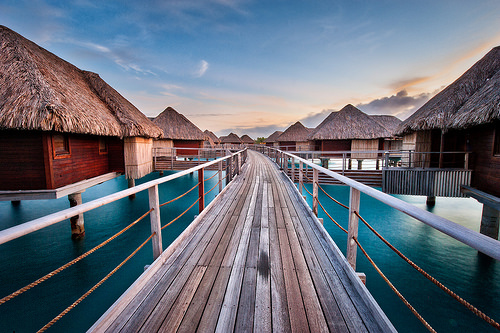 Today’s destination, Bora Bora is tied with Turks & Caicos as the number one place I’d like to go for a totally relaxing vacation. All I want to do is stay in one of those huts over the ocean and stare at the sea for an entire week. Okay, maybe eat seafood and have a cocktail or two. But that’s it. Aside from read books. There you go—eat, read, sip cocktails, stare at fishes. I’ll even forego my usual visit of historical sites. Mostly because there doesn’t seem to be any, aside from WWII munitions.
Today’s destination, Bora Bora is tied with Turks & Caicos as the number one place I’d like to go for a totally relaxing vacation. All I want to do is stay in one of those huts over the ocean and stare at the sea for an entire week. Okay, maybe eat seafood and have a cocktail or two. But that’s it. Aside from read books. There you go—eat, read, sip cocktails, stare at fishes. I’ll even forego my usual visit of historical sites. Mostly because there doesn’t seem to be any, aside from WWII munitions.
Like Tahiti, Bora Bora is technically part of France. It was an independent kingdom until 1888 when its last queen was forced to abdicate when the island became a French colony. In World War II the USA used the island as a supply base and set up fortifications at strategic points to protect it in case of attack, which thankfully never happened. Today, tourism is what supports the island and its approximately 8800 permanent inhabitants.
There are, as on Tahiti, 4-wheel-drive safaris you can take into the interior of the island and get some amazing panoramic views. When I was researching things to do on the island, I came across this sentence in the interior tour description: “The tour also stops at Matira beach and village of Vaitape, 2 unavoidable places to visit on Bora Bora main island.” I’m not sure “unavoidable” is the word they were looking for, perhaps “unmissable?”
But basically, aside from a day-trip to the interior and scuba diving or snorkeling, there’s not a lot to do except for, you guessed it: eat, read, sip cocktails, and stare at fishes. See why it’s my ideal place for a total relaxation vacation? No guilt when you lie around thinking you should be out sightseeing. Of course it would drive my husband crazy, unless there were a TV station showing non-stop football (soccer) games. He’s not much into the relaxing and reading scene. I may have to go without him.
So, with limited activities, where you stay is of prime importance. Hotels range from approximately $100 a night to $7,000, although to be fair, you get two bedrooms and a private pool for that price. I know which one my budget would demand. But maybe I could write about one of my billionaire heroes sweeping the heroine of his heart off to stay in one of the luxury ones and call it research.
With snow still on the ground and no hint of spring anytime soon in the forecast, if next month’s blog post is a little late, you’ll have to wait until I get back from Bora Bora. Until then, happy reading.
photo credit: ShutterRunner Overwater Bungalows via photopin (license)
Tahiti
- Details
- Written by Alexia Alexia
- Hits: 4501 4501
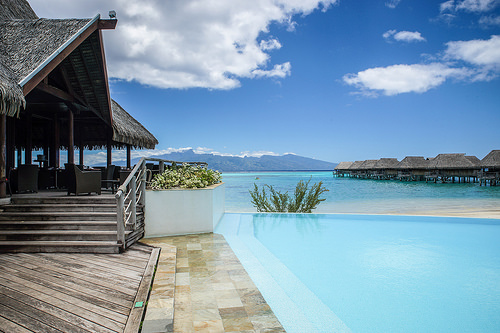 Miss me? I took a month off blogging, my first in over four years (except for the time when I had to rebuild my website), to concentrate on a couple of other projects. Stand by for some hopefully awesome news in the next few months. And if you haven’t already, sign up for my newsletter as that’s where I’ll be telling people first.
Miss me? I took a month off blogging, my first in over four years (except for the time when I had to rebuild my website), to concentrate on a couple of other projects. Stand by for some hopefully awesome news in the next few months. And if you haven’t already, sign up for my newsletter as that’s where I’ll be telling people first.
Anyhow, it’s freezing cold here and there’s at least three feet of snow out my front door, so rather than continue our journey around Eastern Europe, let’s head somewhere warmer – Tahiti. It’s on my bucket list of places to visit and is looking mighty good right now when the weather here is below zero Celsius. First, some facts: Tahiti is the largest of 118 islands and atolls in French Polynesia and is roughly halfway between California and Australia. Technically part of France, the official language is French although Tahitian is widely spoken.
Only 45 kilometers at its widest point, it’s not a huge island, in fact it’s actually more like two volcanic islands, one slightly smaller than the other, connected by an isthmus. (I knew those geography lessons would come in handy one day.) Located near the equator, Tahiti has a year-round warm climate with more sun and less rainfall than Hawaii. The average daily temperature is 25C and the water temperature near the same. “Summer” months are November through April when it’s slightly warmer and more humid. “Winter” is May through October when it’s cooler but also drier.
I was first introduced to the island of Tahiti through the pages of Mutiny on the Bounty and the paintings by Paul Gaugin from his time on the island. Since then, Tahiti and the surrounding islands have become a mecca for travelers seeking sun and relaxation. But, supposing you could drag yourself away from your bungalow over the ocean, what’s there to do?
The number one attraction is the market in Pape’ete. Covering an entire city block, this is where you shop for colorful sarongs, shell necklaces and woven hats. You can also get lunch here from the vendors, including Ma’a Tahiti, traditional Tahitian food. Or you could visit a couple of pearl museums, and one for Gaugin which may or may not be open (check before you head there), and a lagoonarium. The lagoonarium (what a great word) is reached through the Captain Bligh restaurant and is evidently free if you eat there first. It (the lagoonarium, not the restaurant) has an underwater viewing area where you can watch the fishes without getting your feet wet.
A visit to the botanical gardens would be on my to-do list although if you go, either take bug spray or my preferred mosquito repellant: someone they enjoy biting more than you. My top touristy thing to do, however, would be an all-day Jeep safari into the inner island—archeological sites, blowholes, waterfalls, and rainforest walks—sounds like an amazing day.
So there you have it – Tahiti. Next post we’ll pop over to Bora Bora, also on my bucket list. Until then, stay warm.
photo credit: TimoOK Infinity pool by the bar via photopin (license)
Romania
- Details
- Written by Alexia Alexia
- Hits: 4028 4028
 Today we find ourselves in Romania. I will admit, I’ve always wanted to visit this country although I have been put off by some of the documentaries I’ve seen and stories I’ve read. But let’s leave that aside and see what there is to do in this country when visiting as a tourist.
Today we find ourselves in Romania. I will admit, I’ve always wanted to visit this country although I have been put off by some of the documentaries I’ve seen and stories I’ve read. But let’s leave that aside and see what there is to do in this country when visiting as a tourist.
First, some facts: located north of Bulgaria, south of Ukraine and Moldova, it’s eastern border is the Black Sea and Hungary and Serbia are nestled on its western edge. It is the largest country in southeastern Europe and the twelfth biggest in Europe. Almost half the land is covered by semi-natural ecosystems and Romania has one of the largest areas of undisturbed forest in Europe. And in the spirit of symmetrical aesthetics, the terrain is equally divided amongst hills, mountains and plains.
As with all the countries in this area, it’s been overrun by most every dominate kingdom of the era, so there are Saxon, Roman, Ottoman, etc. influences. But for most people, mention Romania and they immediately think of Transylvania and Dracula. Bran Castle is, obviously, a must-see tourist attraction. Evidently, the original castle was destroyed in a battle but subsequently rebuilt during the 14th-century “everyone needs a castle” craze. In addition to Bran Castle, there’s also Corvin Castle which you can wander around freely and let your imagination loose.
Peles Castle is a neo-Renaissance masterpiece started in 1875. Guided tours are compulsory and you have to pay extra to take photographs but evidently there’s lots to see. If you’re done with castles, there are plenty of museums. However, for me, I’d head to Maramureş, Romania’s most traditional area and stroll among the cobbled streets, gawk at the gothic wooden steeples on the churches (eight of which have UNESCO world heritage designations) and basically see what Romania was like one hundred years ago.
Of course if I had a supercar, I’d do like Top Gear and drive it under the People’s House also known as the Parliament Palace, the second largest administrative building in the world (after the Pentagon). Or a could be a normal person and take the tour.
With almost fifty percent of the country semi-natural, there are lots of hikes, mountain bike tours, horseback riding, skiing, golfing, fishing… I don’t think you’ll be bored in Romania.
So what do you say, shall we give Romania a try?
photo credit: bortescristian Peles Castle via photopin (license)
Bulgaria
- Details
- Written by Alexia Alexia
- Hits: 4268 4268
 Wow, November kind of snuck up on me. Please accept my apologies for the lateness of this blog post. As we’ve been loitering around south-eastern Europe for a few months now, we might as well head a little further north to Bulgaria. Guess what, one of my daughters is named after its capital, Sofia.
Wow, November kind of snuck up on me. Please accept my apologies for the lateness of this blog post. As we’ve been loitering around south-eastern Europe for a few months now, we might as well head a little further north to Bulgaria. Guess what, one of my daughters is named after its capital, Sofia.
Aside from an elegantly named capital, let’s see what else is interesting about this Black Sea-bordering country. I bet you haven’t heard many people say, “I’m off to Bulgaria on holiday.” Or, “Pick up a bottle of Bulgarian red wine while you’re out.” However, according to Lonely Planet, Bulgaria is a “mysterious, multi-layered country, with ski-fields as fantastic as its beaches.” Although I do wonder at the term ski field as I much prefer skiing on mountains rather than fields, but I guess it comes down to whatever floats your boat.
Bulgaria is also supposed to be a haven for hikers and mountain bikers. The country boasts seven mountain ranges, glacial lakes, and forests with bears, wolves, and lynxes but depending on your view of possibly being eaten, I’ll let you decide if this is a good thing or not. Some of the photos I’ve seen, however, are stunning so if the outdoors is your thing, definitely check out Bulgaria.
Given its geographic location, the country is also full of historical sites. From Neolithic settlements hidden in riverside caves, to Thracian tombs and Roman cities, Bulgaria has history for everyone. Plovdiv is Europe’s oldest continually inhabited city and will be a European Capital of Culture in 2019. It’s cobblestoned lanes and romantic old town is packed with museums, galleries and guesthouses located in colorful 19th-century mansions. If you fancy pretending you’re a medieval tsar, then head over to Veliko Târnovo. The site has more than 400 houses, 18 churches, the royal palace, and an execution rock. The original structures were destroyed in 1393 during a Turkish invasion but have been restored. Wander carefully, potholes, lose steps and sudden drops are common.
After all this history, a wee break at the beach sounds like a good idea and Bulgaria has a long, sandy Black Sea coast with resorts to rival those of western Europe. Varna and Burgas are two seaside cities famous for summer festivals and nightlife. If you prefer your beach scene a little quieter, then the recommendation is to head to the far north or south where picturesque ancient towns are waiting to welcome you.
So, with all there is to see and do, I’m sure soon you will be hearing, “I’m off to Bulgaria on holiday.” Who knows, maybe I’ll be able to include it in my 2017 European Adventure and take my daughter to her namesake city.
Happy travels and reading, everyone.
Greece
- Details
- Written by Alexia Alexia
- Hits: 4588 4588
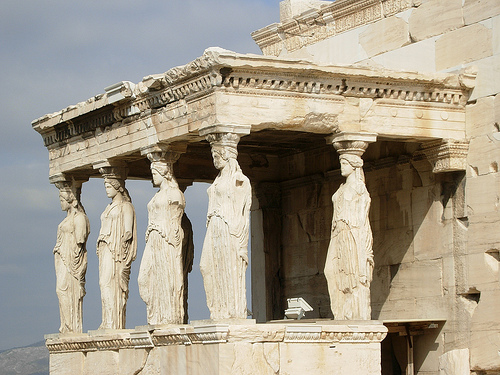 We’ll slip down south from Macedonia and into Greece for today’s post. I’ve been to Greece. Twice technically although once was only to change plans. I was taking my mother to Egypt, we landed at Athens airport, she looked around and said, “It looks just like Kamloops.” Great, I take my mother on an epic around-the-world adventure, to the cradle of civilization, and she compares it to a pokey town four hours from where she grew up in British Columbia, Canada.
We’ll slip down south from Macedonia and into Greece for today’s post. I’ve been to Greece. Twice technically although once was only to change plans. I was taking my mother to Egypt, we landed at Athens airport, she looked around and said, “It looks just like Kamloops.” Great, I take my mother on an epic around-the-world adventure, to the cradle of civilization, and she compares it to a pokey town four hours from where she grew up in British Columbia, Canada.
The first time I went to Greece, however, I was alone, but on a very tight budget having already spent most of my money. The first thing to know about Greece is that the plumbing system is original to when Alexander the Great ruled the place, so you can’t actually put toilet paper into the toilet, you’re supposed to put it in a waste bin next to the toilet. Result, the washrooms stink. This may have improved since I was there, and maybe newer hotels don’t have this issue, but if you stay in a dive like I did, be prepared.
Second, Athens is amazing. The Parthenon is fabulous and the way they light it up at night is breathtaking. There are also fabulous views from up there so be sure to take a good camera. Another highlight of Athens is the National Archaeological Museum which I believe was free one day a week when I was there but given the state of Greece’s finances, they undoubtedly removed that now. But trust me, it’s worth it. I spent many happy hours wandering around this museum.
My time in Athens was, however limited as I was joining a tour in Istanbul, Turkey in a few days’ time. So I took a night bus to Kavala in northern Greece. I think I was the only foreigner, at least the only woman on the bus, so it was a bit intimidating. In the middle of the night we stopped at Thessaloniki so the driver could have a break. We all had to get off but I had no idea how long we were staying so didn’t risk going into the nearby café. Twenty minutes later when we were allowed back on the bus, I was frozen. From Kavala I had planned to visit the town of Philippi but soon discovered that the bus I’d hoped to get to Istanbul the next day either wasn’t running or was full so I needed to take the night train from Xanthi.
With a whole day to kill and nowhere to store my bag, I found a nice park and set about reading a book and people watching. An elderly lady walked by me, stopped, and then returned and offered me a pear from her shopping. Of all amazing the things I’d seen in Greece, the mishaps and misadventures, this was my over-riding memory—an elderly widow (I’m guessing because she was dressed all in black) offering me a piece of fruit. Her kindness touched my heart.
When I finally got the bus to Xanthi, I discovered that the train station was not near the bus stop. I wandered around for a while before pulling out my Greek phrasebook and asking a couple eating at an outdoor café, in Greek, if they knew the way to the train station. Well, my Greek must have been amazing because they answered in perfect English and told me it was too far to walk and I’d have to get a taxi. At least they’d understood what I said. My train trip to Istanbul was another adventure, but not one I will commit to writing.
I still have dreams of touring more of Greece, definitely visiting some of the islands. But in the meantime, I’ve had to content myself with research for writing my book, The Greek’s Stowaway Bride. It’s one of my favourite books I’ve written (the heroine was unstoppable) so if you haven’t read it yet, be sure to pick it up.
Until November, happy trails and good reading!
photo credit: xiquinhosilva 04620-Athens-Acropolis via photopin (license)
Macedonia
- Details
- Written by Alexia Alexia
- Hits: 4576 4576
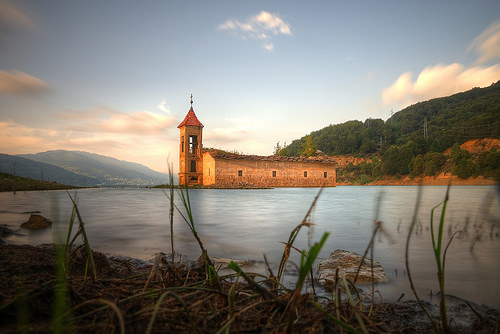 North of Greece and east of Albania is the small land-locked country of Macedonia, another former part of Yugoslavia. I know next to nothing about this country so let’s discover it together. At first I thought Macedonia was the original homeland of Alexander the Great but upon further research discovered that he was from an area of Greece with the same name. In fact, Greece has strongly objected to Macedonia taking that name and has blocked the newly formed country’s entry into several global organizations due to its concerns.
North of Greece and east of Albania is the small land-locked country of Macedonia, another former part of Yugoslavia. I know next to nothing about this country so let’s discover it together. At first I thought Macedonia was the original homeland of Alexander the Great but upon further research discovered that he was from an area of Greece with the same name. In fact, Greece has strongly objected to Macedonia taking that name and has blocked the newly formed country’s entry into several global organizations due to its concerns.
The country now calling itself Macedonia is in fact the approximate territory of the ancient kingdom of Paeonia. Philip, Alexander the Great’s father, conquered part of the land and Alexander the remainder during his reign, incorporating it into their kingdom of Macedon, so I guess that’s where they lay claim to the name. Throughout history, the country appears to have been overrun by the superpower of the day—Romans, Normans, Byzantines, Slavs, Ottomans, Serbians, Bulgarians—each have left their mark on this territory. With such a diverse history, there must be lots to see and do so let’s check it out.
Golem Grad is the number one place to visit in Macedonia. It’s an island in Lake Prespa, best reached by boat from the village of Konjsko. There are dozens of ruins to explore, ranging from a 4th century Roman cistern to a 5th century basilica and a 14th century church. I was all ready to book my travel until I read that it is also called Snake Island and while the majority of snakes are “harmless”’ water snakes, there are some poisonous land snakes as well to watch for. So, maybe I’ll pass for this time.
There are also a couple of ancient monasteries to visit and an extensive Roman ruin to explore. But if my time were limited I’d probably chose to spend it in Ohrid. This small city, set on a lake of the same name, is a UNESCO world heritage site. You can stroll along the lake on a boardwalk to beaches, bars and restaurants. The translucent cool water and cliff-backed setting lead to the Church of Sveti Jovan with magnificent views over the lake and mountains in the distance. Also on Lake Ohrid is Vevčani, a 9th century mountain side village with narrow old-brick streets, natural springs, and traditional restaurants.
Speaking of mountains, Macedonia has them and the walking trails are reputed to be wonderful and quiet. The whole country is evidently “under-explored” although in general this means you may need to be inventive if you want to see or do something specific.
Finally, a stay in Skopje (the capital) seems in order, including a few hours (or maybe more) in the nearby Ĉaršija, an old Turkish town that hosts Skopje’s best historic structures including a stone bridge. The area’s winding lanes are full of tea houses, mosques, small shops and evidently good nightlife.
Although it sounds interesting, I’m not sure Macedonia will make next year’s European adventure itinerary. But I would love to visit someday. Have you been? See you back here on the 15th. Until then, happy trials and happy reading.
photo credit: mariusz kluzniak sunken st nicholas church and lake mavrovo macedonia via photopin (license)
Serbia
- Details
- Written by Alexia Alexia
- Hits: 4477 4477
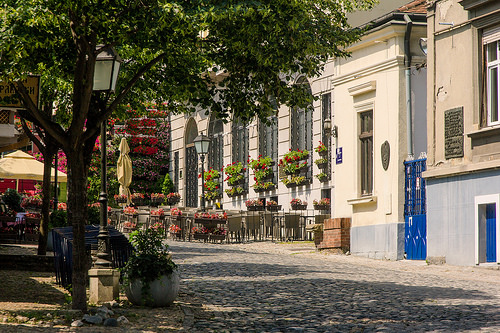 Today’s destination is just to the east of where we left off in Bosnia-Hercegovina, the newly-minted country of Serbia. The Republic of Serbia officially became an independent country in 2006 when it split from Montenegro. Of course the region’s history goes back much farther. Seventeen Roman emperors were born in the area today occupied by Serbia and many built palaces or left monuments to commemorate their place of birth. Given its geographical location, Serbian history is a mix of cultures, ethnicities and religion. Today, Serbia is a warm, welcoming place with a strong reputation for fun.
Today’s destination is just to the east of where we left off in Bosnia-Hercegovina, the newly-minted country of Serbia. The Republic of Serbia officially became an independent country in 2006 when it split from Montenegro. Of course the region’s history goes back much farther. Seventeen Roman emperors were born in the area today occupied by Serbia and many built palaces or left monuments to commemorate their place of birth. Given its geographical location, Serbian history is a mix of cultures, ethnicities and religion. Today, Serbia is a warm, welcoming place with a strong reputation for fun.
Two citadels top the list of things to see in Serbia. The first, Petrovaradin Citadel is nicknamed the Gibraltar of the Danube and is located in Novi Sad, just north of the capital Belgrade. Novi Sad itself seems worth a visit, even if citadels aren’t your thing. All the attractions are easily reached on foot along a pedestrian thoroughfare and there are plenty of outdoor cafes to indulge your people-watching passions.
The second citadel of note is in Belgrade. Kalemegdan has been fought over more than a hundred times and destroyed over forty times. My favorite quote about this place comes from Lonely Planet’s travel website: (https://www.lonelyplanet.com/serbia/belgrade/sights/military/kalemegdan-citadel) “The fort's bloody history, discernible despite today's plethora of jolly cafes and funfairs, only makes Kalemegdan all the more fascinating.” Belgrade, by the way, is touted as one of the world’s wildest party destinations. Sounds like a perfect meet-cute setting for a romantic comedy.
Once you’re partied-out, you can make a trip to Studenica Monastery, one of the most sacred sites in Serbia. Founded in 1190 by then prince, now saint, Stefan Nemanja, the monastery continues operation today while welcoming visitors. Perversely, the fourth suggested attraction on the list is a trip to Devil’s Town in the southern part of Serbia. It’s actually a cluster of 202 natural stone pyramids which loom over a bright-red, highly acidic mineral stream. I’ve seen the pictures, it’s not all that scary.
If man-made architecture is more your thing, then a day-trip to Subotica should be on your itinerary. Art-nouveau is mixed with Serbian and Hungarian flavors and the city has been called one of the most beautiful in the country. And then there are the nearby lakes Palic and Ludaš, both extremely shallow. Ludaš has an average depth of 1 meter and the water temperature reaches up to 30C in summer.
It seems that partying or festivals are the real draw for visiting Serbia. Novi Sad hosts EXIT, Serbia’s largest music festival. Belgrade is known for its exuberant nightlife. And evidently sipping posh cocktails in the antiquated alleyways of Niš is a thing. I’d like it to be my thing.
So, there you have it, Serbia. See you back here in October. And if you’ve enjoyed this blog don’t hesitate to subscribe and/or sign up for my free monthly newsletter where I give away books, post exclusive excerpts…and there may be a cocktail recipe every now and again as well. Cheers!
photo credit: Skadarska Street, Belgrade via photopin (license)

